Some of the following companies that manufacture(d) photographic material have already passed by in other parts of the site. Here you will find an overview of companies that marketed photographic material in the nineteenth and twentieth centuries. More is usually known about the best known or the most influential companies than about the lesser known ones; therefore they will be discussed more extensively than others.
The emphasis in this part of the site is more on the ups and downs of the company as such, while in other chapters the emphasis was on the product or on the man or woman who founded the company. The order of all companies is alphabetical.
Below are the names of the companies as will be discussed in this or any other chapter. By clicking on a name (so not on the bullet in front of it), you go directly to that part on this page where the manufacturer in question is located. Scrolling is also possible of course, but this service helps you to get to the desired manufacturer in question much faster.
Due to the fact that this introductory page has become much longer than originally planned and desirable due to the large number of manufacturers, we strongly advise you to use the name service below to go to the manufacturer of your choice on this or any subsequent page.
- General Introduction
- ADOX
- Agfa (see also Gevaert)
- Altissa
- Amaloco
- Ansco Camera Co (see also GAF)
- APM/APeM (see also Soho)
Amalgamated Photographic Manufacturers Ltd - Argus Camera Co, Ann Arbor Michigan
- Arsenal (see Kiev-Arsenal)
- Artima Export Ltd (see also Truvox)
- Asahi Pentax
- Bencini
- BOLCo and E Elliott Ltd
(abbrev. for The British Optical Lens Company) - Carl Braun Kamera-Werk
- Canon Inc.
- J.T. Chapman, Manchester
- The Chicago Cluster of Companies
(consisting of 56 companies ) - Chinon
- Concord Camera Corp.
- K.G. Corfield & K.G. Corfield (Sales) Ltd.
- Coronet Camera Company
- Cosina Company, Ltd.
- Dacora
- Dixons
- Durst
- EHO-Altissa company (See Altissa)
- E Elliott Ltd and BOLCo
(abbrev. forThe British Optical Lens Company) - Ellison Kamra
(see also QRS Devry Kamra Company) - ELOP
- Ensign Ltd.
(distribution Company of Houghton-Butcher) - Ernemann-Kamerawerke AG
- Expo Camera Company
- The FED Company
- Ferrania
- Fisher-Price
- Fodor
- Foitzik-Kamerawerke
- C.F. Foth
- Fototecnica
- Franka Kamerawerk –
- Fujica (Camera Division of Fujifilm)
- Fujifilm (brief history)
- Futura
- GAF (see also ANSCO)
(abbrev. for General Aniline & Film) - Louis Gandolfi
- Herbert George Company
- Gevaert Photo-Producten N.V. (see also AGFA)
- Girard et Cie
- GNOME
- GOERZ
- GOMZ (LOMO)
- Graflex (Folmer & Schwing)
- Great Wall Plastics Co
- W. Haking Enterprises Ltd.
- Hanimex
- Hasselblad
- Healthways
- Houghton–Butcher Manufacturing Co (See also Ensign Ltd. and Ross-Ensign Ltd.)
- R.F. Hunter Ltd.
- ICA AG
- Ihagee (Exakta)
- Ilford
- Imperial Camera Corporation
(see the Herbert George Company story ) - Jos-Pe
- Kamera-Werkstätten Guthe & Thorsch
- Keystone
- Kiev Arsenal
- KMZ
- Kochmann
- Kodak USA (incl. Australia, Canada, France, Germany & the UK)
- Konica-Minolta (Konishiroku)
(see also Minolta) - Kowa
- Krügener
- Kürbi & Niggeloh (Bilora)
- Kyocera (Yashica, Contax)
- Lancaster
- Leitz
- Lensless Camera Manufacturing Company
- Linhof
- Lipca (see also Richter-Tharandt)
- LOMO (see GOMZ)
- Loreo
- Mamiya
- Meopta Optotechnica
- Mimosa AG
- Minolta (see also Konica-Minolta)
- Minox Company
- Miranda (Orion)
- MMZ-BeLomo
- Motodori (Condor)
- Dr. August Nagel Kamera Werke
- Neidig Kamerawerk
- Nemrod-Metzeler (See Healthways)
- Nettel
- Nikon Company
- Nimslo Corporation (see also Nishika)
- Nishika Optical Systems (see also Nimslo)
- Noblex (See also K-W Guthe & Thorsch)
- Olympus Company
- ORION (see Miranda)
- ORWO
- Ottico Meccanica Italiana (OMI)
- Paterson Products Ltd.
- VEB Pentacon Dresden
- Pentax (See Asahi Pentax)
- Petri
- Photavit (Bolta)
- Plaubel
- Polaroid
- Photo Porst
- Karl Pouva – VEB Fototechnik Freital (see also Woldemar Beier)
- Purma Cameras Ltd.
- QRS Devry Kamra Company (see also Ellison Kamra)
- Foto-Quelle
- Rectaflex
- VEB Rheinmetall Büromaschinenwerk
- Richter-Tharandt (see also Lipca)
- Ricoh
- Rollei Germany
- Rollei Singapore
- Ross-Ensign
(continuation from Ensign Ltd.) - Ro-To Company
- Sea&Sea-Sunpak
- Shanghai Seagull
- Sida-Fotofex
- Sigma
- Soho Ltd (see also APM)
- Standard Cameras
- Steinheil
- Stenopeika
- Thornton-Pickard
- Topcon (Tōkyō Kōgaku)
- Tougodo Company
- Traid Corporation
- TRUVOX (see also Artima Export)
- Tura AG
- Universal Camera Corp.
- Vivitar
- Voigtländer
- Vredeborch
- Welta
- Werra (C. Zeiss Jena)
- Wirgin
- Kamera-Fabrik Woldemar Beier (see also Karl Pouva)
- Hermann Wolf GmbH
- Wünsche
- Yashica (see also Kyocera)
- Zeiss Ikon AG
- Zion
- Zunow (Teikoku Kōgaku)
1835: : James Lancaster; 1871: J. Lancaster & Son; 1905: J. Lancaster & Son. Ltd; 1955: the firm ceased trading.
1835: 87 Bull Street, Birmingham; 1849: 7 Summer Lane, Birmingham; 1853 – 1907: 5 Colmore Row, Birmingham; 1908: 87 The Parade, Birmingham; 1935: 54 Irving Street, Birmingham.
Lancaster was an optician and camera maker, based in Irving Street, Birmingham. It was one of the world’s major camera makers in 1898. It made wooden view cameras, among them several cameras for smaller plate formats. Lancaster made its own lenses and had patents for shutters. Other products were magic lanterns and photographic enlargers.
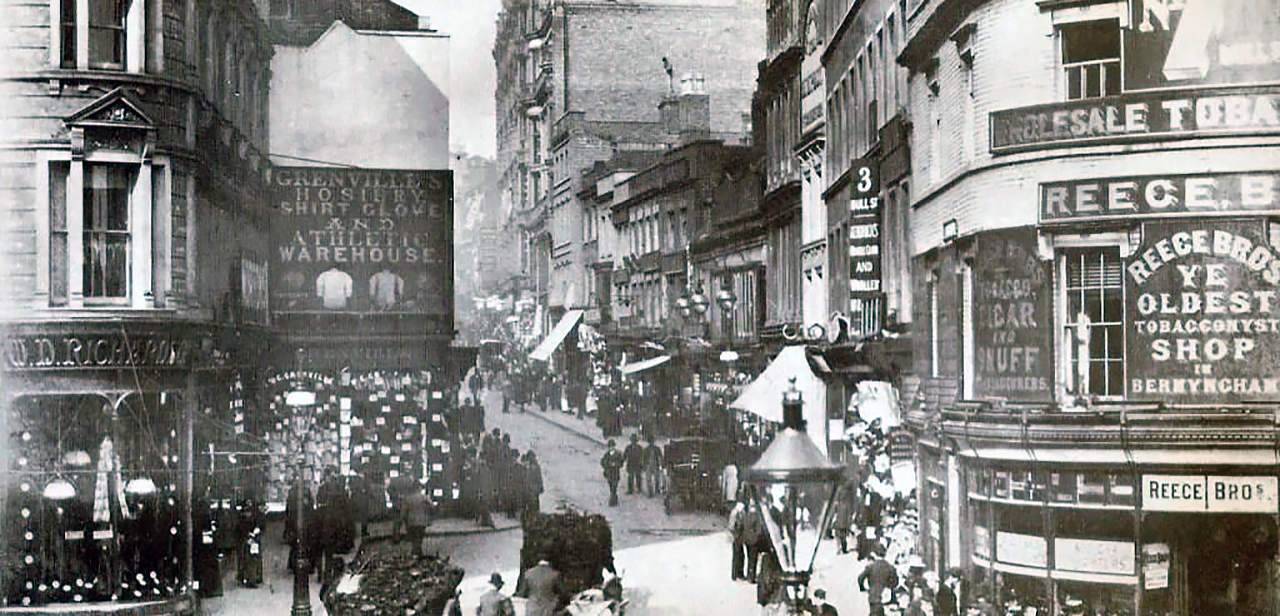
Bull Street Birmingham taken from High Street in 1880
the largest makers of photographic apparatus on the world
Responding to a statement that the firm was credited with having initiated the amateur trade W. J. Lancaster stated that: ‘I introduced the first guinea camera in the year 1880, and there is no doubt that had a good deal to do with the amateur taking to photography’. Lancaster was probably referring to the Le Merveilleux camera. Le Merveilleux was Lancaster’s lowest priced series of cameras for the amateur.
The camera itself is a primitive folding view design constructed of polished mahogany with brass trim. A simple meniscus achromatic lens, standard for the Le Merveilleux, was mounted in a brass tube that slides forwards and backwards for focusing. The table below shows the initial sales of this camera.
DATE |
TYPE |
AMOUNT |
|---|---|---|
| 8 July 1881: | Le Merveilleux camera | 100 sold in 3 weeks |
| 5 August 1881: | Le Merveilleux camera | 250 sold in 6 weeks |
| 2 September 1881: | Le Merveilleux camera | over 400 sold |
| 4 November 1881: | Le Merveilleux camera | over 600 sold |
 By 1897 the firm claimed total sales of over 180,000 cameras and 250,000 lenses and was making 20,000 cameras annually. J. Lancaster and Son of Birmingham claimed to be ‘the largest makers of photographic apparatus on the world’ by 1889 and regularly advertised the number of cameras sold. The remarkable growth in sales that the company achieved over the period between 1881 and 1906 was only achieved by adopting a radically different business model to its contemporaries.
By 1897 the firm claimed total sales of over 180,000 cameras and 250,000 lenses and was making 20,000 cameras annually. J. Lancaster and Son of Birmingham claimed to be ‘the largest makers of photographic apparatus on the world’ by 1889 and regularly advertised the number of cameras sold. The remarkable growth in sales that the company achieved over the period between 1881 and 1906 was only achieved by adopting a radically different business model to its contemporaries.
It is unclear how James Lancaster manufactured in the early days although as a small optician he probably was making and assembling photographic equipment in his own workshop. This had changed dramatically by the 1890s. In contrast to Thornton-Pickard or Watson, Lancaster was not operating a standard manufacturing model based on a mechanised factory.
Once camera production began to increase significantly in the 1880s the firm adopted a new way of manufacturing using outworkers to manufacture and assemble cameras and photographic equipment. This gave Lancaster the ability to manufacture according to demand without tying up large amounts of capital in buildings, machinery and labour.
It is significant that the firm did not convert to a limited liability company until 1904, later than its competitors. It had no need for capital to finance manufacturing facilities or plant. The company relied principally on selling to retailers and depended ‘very little, if at all, on a dealer’s trade or chance custom’.
Lancaster’s manufacturing method was described in 1930: The great output of J. Lancaster apparatus was organized on a system, which has ever been imitated on a similar scale in the photographic trade. He had no factory in the ordinary sense.
In Birmingham, as in Paris, there have always been a vast number of individual workshops, turning out goods in wood and metal. In those days if you journeyed round the outskirts of “Brum” (Birmingham) you discovered numerous small shops, all busily engaged and all “making for Lancaster.”
Lancaster died in 1925 and thirty years after death of James, in 1955, the company ceased its activity.
Lancaster & Son was a renowned optician dealing with spectacles, microscopes and telescopes and camera maker based in Birmingham, founded in 1835 as optical company. It got a patent on an achromatic meniscus lens in a brass tube which was focusable by means of a lever.
 By the mid-1860s the firm was advertising cameras, lenses and photographic chemicals, including collodion for which it claimed fourteen years experience in making, dating back to 1852.
By the mid-1860s the firm was advertising cameras, lenses and photographic chemicals, including collodion for which it claimed fourteen years experience in making, dating back to 1852.
After 1871, when William James, the son of the founder, had joined the company, it started making wooden view cameras, among them several cameras for smaller plate formats.
In order to reflect involvement of James’ son William, the company was renamed to J. Lancaster & Son. The Lancaster Gem Apparatus of 1880, with 12 lenses to make 12 small exposures on a big plate, may have been the company’s first exciting novelty.
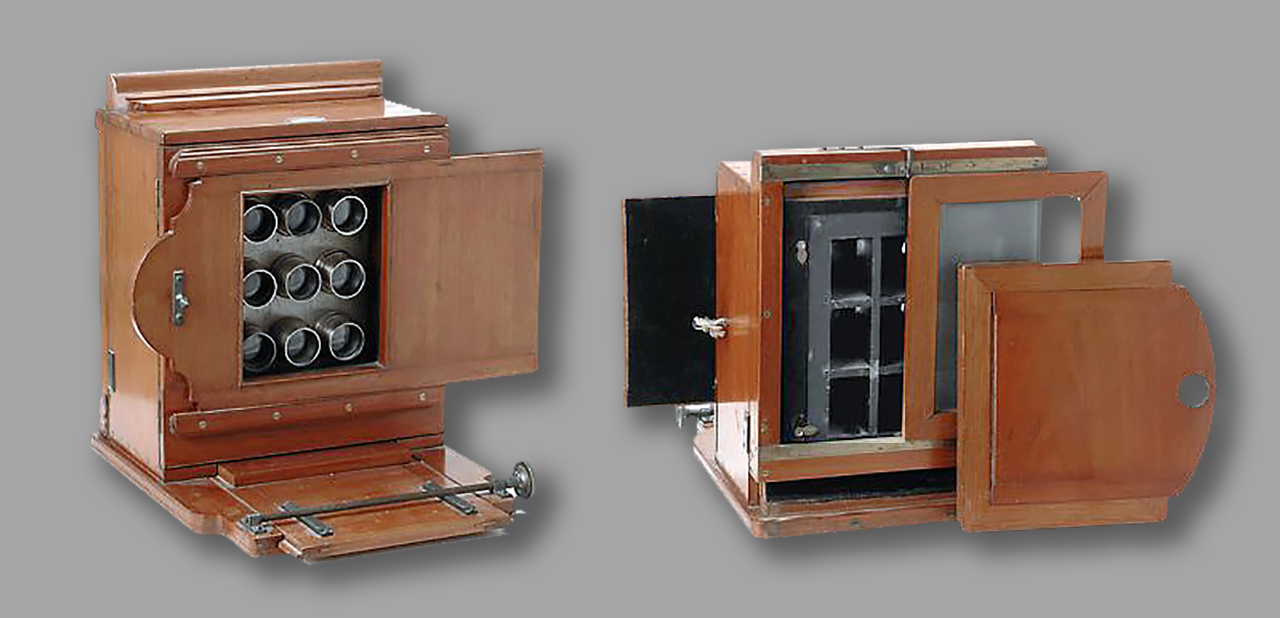
c1880-1910. Gem-type exposures, 4, 6, 9 or 12 lenses. Also known as Carte Apparatus. Later also manufactured as Gem and Victoria apparatus.
lancaster’s Cameras
The company produced cameras named Instantograph for many years, during which the design of the camera developed somewhat. It is usually a quarter-plate camera. The ordinary Instantograph was later renamed the BB Instantograph (BB for brass-bound), the most extraordinary was named Empire Instantograph. Lancaster’s Instantograph series was appealing to advanced amateurs such as the English photographer James Coventry.
Lancaster made also some stereo folding cameras, and some detective cameras, the Rover and Perfect Omnigraph and the Patent Watch Camera, a tiny plate camera (in two sizes, for gentlemen and ladies) telescoping out of a pocket watch case. Lancaster made its own lenses and had patents on several shutter mechanisms. Other products included magic lanterns.
Lancaster Products & Cameras
- Instantograph
- Le Merveilleux
- Le Meritoire
- Gem Apparatus
- Telescopic Patent Watch Camera in pocket watch format
- 1880: Gem Apparatus
- 1882: Instantograph
- 1882: Le “Meritoire”
- 1882: Le “Merveilleux”
- The “Pocket Le Merveilleux”
- 1886: Watch camera
- 1890: Stereo Merveilleux
- 1891: Stereo Instantograph
- 1891: Stereo Meritoire
- 1891: The International
- 1890: Rover magazine detective camera
- 1893: Perfect Omnigraph detective camera
- 1899: Stopit and Stopit M magazine cameras
- 1900: The Kamret
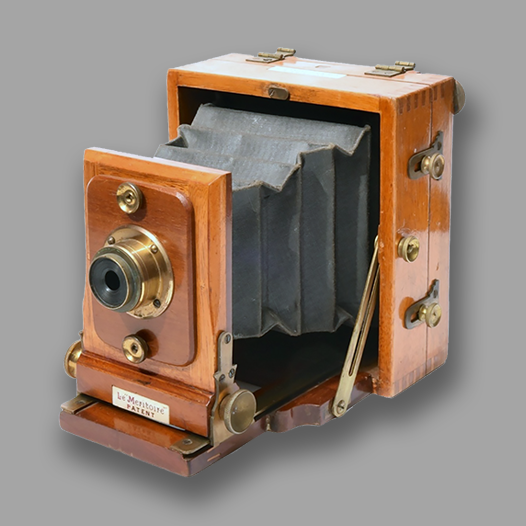
The Meritoire is the mid-range model in Lancaster’s early range of field cameras brought out in 1882. The Meritoire was similar to the Merveilleux but had a swing back arrangement, rise and cross front and rackwork fitted to the lens. Sizes were the same as the Merveilleux.
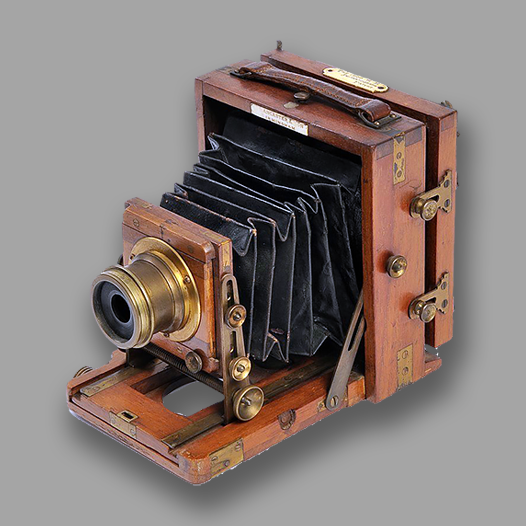
The Instantograph cameras were made by J. Lancaster & Son of Birmingham from about 1886 to 1910 in ¼-plate, ½-plate and 1/1-plate sizes. They were supplied with brass Lancaster lenses. The standard model was then named the B.B. Instantograph (Brass Bound).
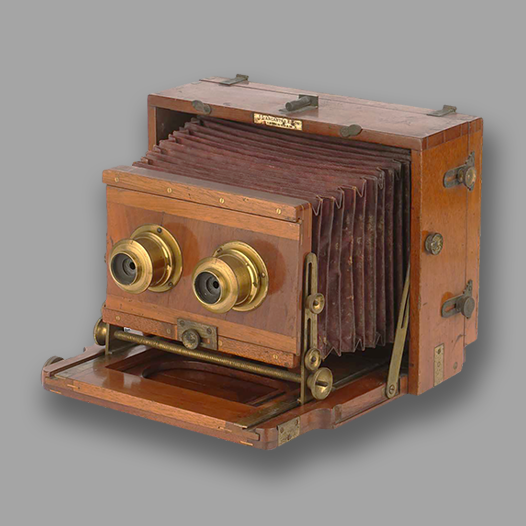
A J. Lancaster & Sons Stereo Instantograph Mahogany Field Camera for 6 3/4 x 3 1/4 inch plates. Fitted with two lancaster rectigraph f/8 brass lenses. Lancaster patent swing out focusing screen. J. Lancaster 1891-1905
FOUNDER: Ernst Leitz (Carl Kellner)
LEITZ WETZLAR
COMPANY NAMES:
1849: Optisches Institut Johannes Hinckel (for financial reasons); 1852: Carl Kellner Optisches Institut; 1869: Ernst Leitz Optisches Institut; 1913: Ernst Leitz Optische Werke, Wetzlar; 1928: Ernst Leitz GmbH; 1970: Ernst Leitz Wetzlar GmbH; 1986: Leica GmbH; 1996: Leica Camera AG; After mergers in 1986 and 1990, a large “Leica Group” was formed, which was dissolved again in 1996/97. The subsidiaries Leica Microsystems, Leica Camera and Leica Geosystems emerged.
COMPANY ADDRESSES:
1849: Rectory at the Jäcksburg, Wetzlar; 1907 – 1950: Ernst Leitz Street, Wetzlar; 1986: Solms; Today: Am Leitz-Park 6, 35578 Wetzlar.
At Leitz in Wetzlar, Germany began the production of microscopes that stand out for their quality and precision. That was the first step taken in creating one of the most renowned and recognised companies in the world known for quality, innovation and differentiation of their products like cameras, optical lenses, photographic lenses, binoculars, riflescopes and microscopes. Throughout its history, Leitz has been responsible for numerous optical innovations, such as a-spherical production lenses, multicoated lenses, and rare earth lenses.
 It was the year 1849 when, in Wetzlar, Germany, Carl Kellner, a young mechanic and self-taught mathematician, founded his “Optisches Institut” (Optical Institute), where he produced glasses and telescopes.
It was the year 1849 when, in Wetzlar, Germany, Carl Kellner, a young mechanic and self-taught mathematician, founded his “Optisches Institut” (Optical Institute), where he produced glasses and telescopes.
Shortly thereafter, in 1851, Kellner published an optics treatise titled “Das orthoskopische ocular, eine neu erfundene achromatische Linsencombination” (Ocular orthoscopy, a recently invented combination of achromatic lenses). The ocular was capable of rendering an image with the correct perspective, free of the distortions typical of other microscopes at that time. His invention was a success among scientists, and the Optical Institute began the production of microscopes that stand out for their quality and precision.
On May 13, 1855 Carl Kellner dies at the age of 29. The management of the Optical Institute is assumed by Kellner’s widow and an apprentice, Friedrich Belthle (1829-1869), who married her the following year and subsequently managed the company. At this time, it was a small business with less than 20 employees and a small workshop. Following Carl Kellner’s early death, his widow continued the business he had left behind.
 The fine mechanic Ernst Leitz I from Baden arrived at Wetzlar in 1864 and entered service at the Optisches Institut. He was trained as an instrument maker for physical and chemical apparatus and had several years’ experience making watches in Switzerland.
The fine mechanic Ernst Leitz I from Baden arrived at Wetzlar in 1864 and entered service at the Optisches Institut. He was trained as an instrument maker for physical and chemical apparatus and had several years’ experience making watches in Switzerland.
Initially, Leitz was a part shareholder of the business (in 1865), but took over as sole owner in 1869 and continued it under his own name.
Leitz introduced serial production, raising sales volume rapidly after 1871. Consulting with his clients, he continued to refine the microscopes to their needs.
50,000 microscopes at the turn of the century
The Leitz microscopes were produced for biomedical as well as industrial purposes, including mineralogy. Leitz microscopes improved on other models of their day in several ways, including lighting and optics, particularly with orthoscopic eyepieces.
By 1880, the company had reached an annual production numbering 500. In 1887 the 10,000th microscope was shipped, four years later the 20,000th, and in 1899 the 50,000th was completed.
At the end of the 19th century, the company already had a worldwide reputation. In addition to microscopes, the product range included various other optical instruments. In 1913 Leitz introduced a first fully functional binocular microscope.
At the beginning of the new century, Leitz introduced eight-hour days and founded a health insurance society for employees. Around 1920 Leitz employed around 1400 people, and by 1956, 6000.
 The First World War did not leave Leitz untouched; the economic situation after the lost war was very bad.
The First World War did not leave Leitz untouched; the economic situation after the lost war was very bad.
This also affected the Wetzlar Company W. & H. Seibert, which was incorporated into the Ernst Leitz company in 1917.
Ernst Leitz died in July 1920 and the leadership of the company passed to his son, Ernst Leitz II.
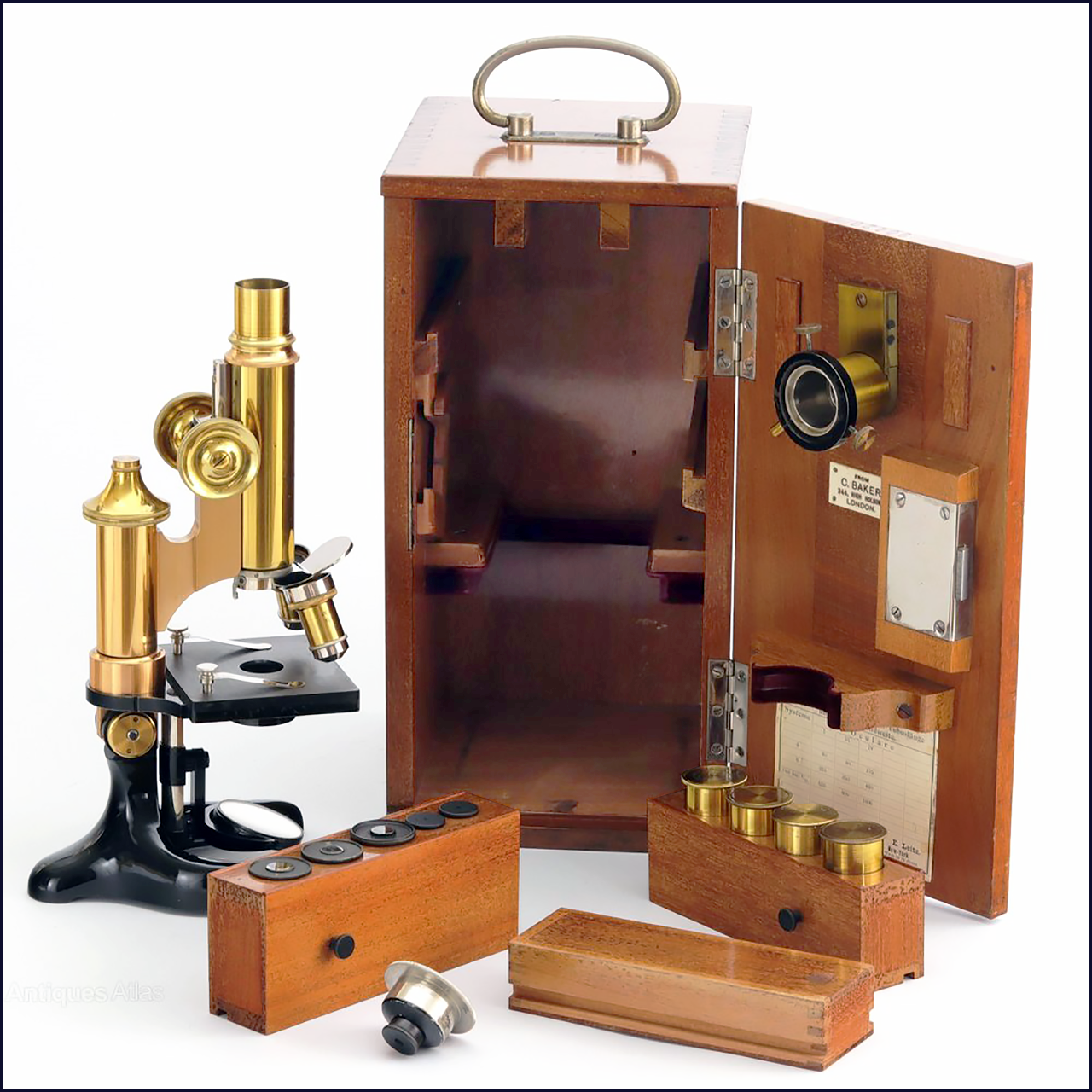
Antique solid mahogany cased brass microscope manufactured in 1906 by Ernst Leitz of Wetzlar, Germany and retailed by C Baker of High Holborn, London. Shaft inscribed “Agent C. Baker 244 High Holburn London” and “E. Leitz Wetzlar No. 90420”. Also inscribe “Fishmongers Company” for the Worshipful Company of Fishmongers.
The Rise of the Leica Camera
 The first 35 mm film Leica prototypes were built by Oskar Barnack at Ernst Leitz Optische Werke, Wetzlar, in 1913. Barnack hated having to carry around bulky and heavy cameras. Employed by Leitz to develop a cine camera, he realized the potential of short lengths of 35mm film for use in a still camera. As an expert machinist, in 1913 Barnack made himself a compact, metal prototype camera, known as the Ur-Leica, or original Leica, for 50 exposures on 35mm film.
The first 35 mm film Leica prototypes were built by Oskar Barnack at Ernst Leitz Optische Werke, Wetzlar, in 1913. Barnack hated having to carry around bulky and heavy cameras. Employed by Leitz to develop a cine camera, he realized the potential of short lengths of 35mm film for use in a still camera. As an expert machinist, in 1913 Barnack made himself a compact, metal prototype camera, known as the Ur-Leica, or original Leica, for 50 exposures on 35mm film.
The name Leica is derived from the first three letters of the founder’s surname (Leitz) and the first two of the word camera: lei-ca (LEItz CAmera).
Barnack conceived the Leica as a small camera that produced a small negative. To make large photos by enlargement (the “small negative, large picture” concept) requires that the camera have high quality lenses that could create well-defined negatives.
After trying a Zeiss Tessar lens, which was originally designed for the 18×24 mm cine format, Professor Max Berek at Leitz designed a 50 mm f/3.5 triplet named the Leitz Anastigmat with the diaphragm between the first and second glass elements. When the Leica was first vended, this lens was renamed the ELMAX, EL for Leitz and MAX for MAX Berek.
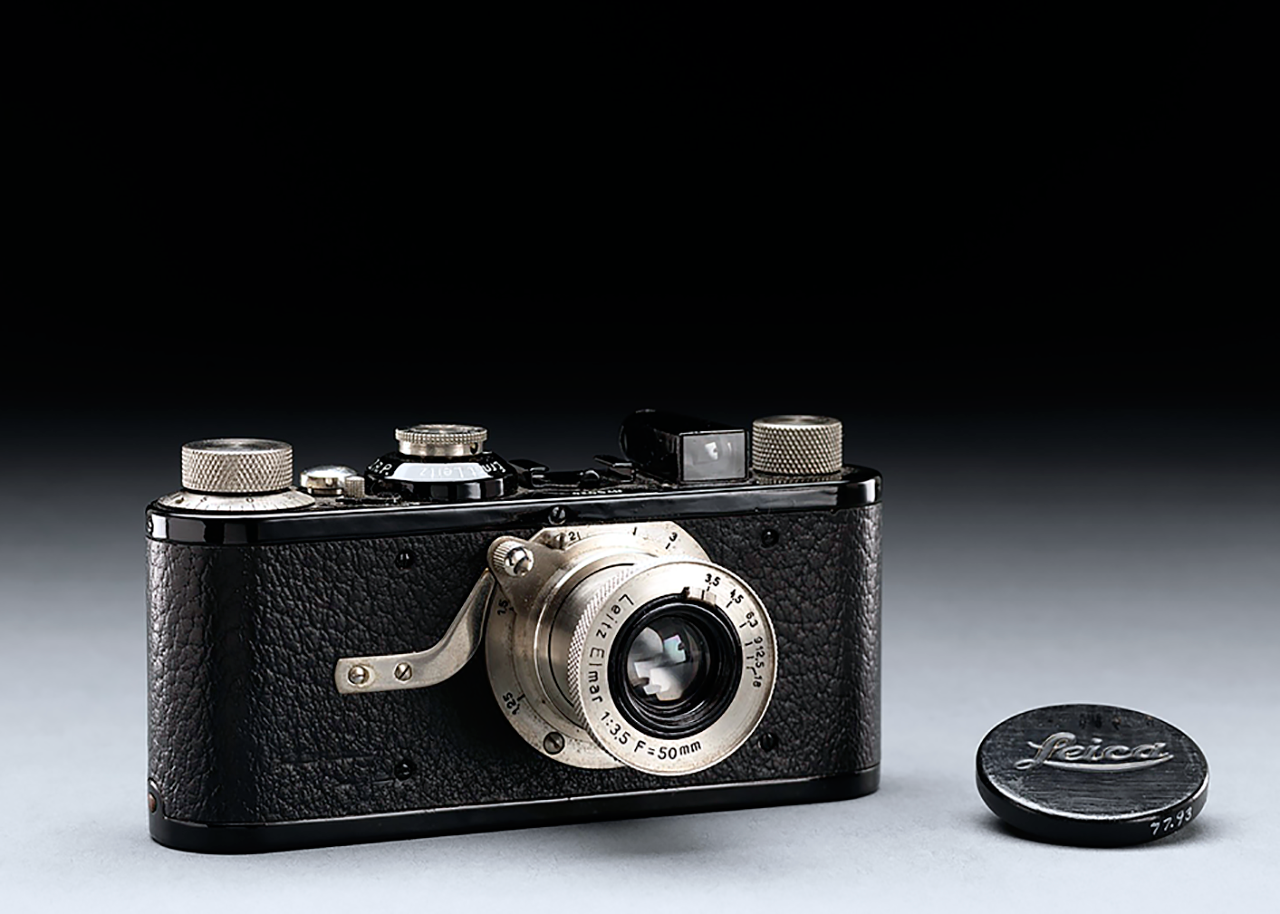
The Leica-1 as manufactured in the first production series

The 1913 Ur-Leica.
Clever use of the cinema film
Some say the original Leica was intended as a compact camera for landscape photography, particularly during mountain hikes, but other sources indicate the camera was intended for test exposures with 35mm motion picture film.
The Leica was the first practical 35 mm camera that used standard cinema 35mm film. The Leica transports the film horizontally, extending the frame size to 24x36mm with a 2:3 aspect ratio, instead of the 18×24 mm of cinema cameras, which transport the film vertically.
The outbreak of the First World War delayed further development, but after the war, in 1923, Barnack convinced his boss, Ernst Leitz II, to make a preproduction series of 31 cameras for the factory and outside photographers to test.
Though the prototypes received mixed reception, Ernst Leitz decided in 1924 in spite of the weak economy to produce the camera. It was an immediate success when introduced at the 1925 Leipzig Spring Fair as the Leica I. It went on sale that summer and, during that first year, 870 cameras were produced.
In Britain, the Leica Cine Film Camera, as it was initially known, was sold from 1926 by Ogilvy & Co of London, for £22 (plus £2 for an accessory range-finder). It was advertised as “A unique camera for use at eye level, unequalled for strength, compactness and rapidity in use.’ Other than shutter blind and optics, this instrument is entirely of metal, and will withstand all climatic conditions and hard wear”.
The period between two world wars
 In 1925 the first polarising microscope was made, and in 1931 the first comparative macroscope for criminological applications. In 1932, Leitz pioneered a fluorescent microscope, and three years later a photometer developed by Professor Max Berek.
In 1925 the first polarising microscope was made, and in 1931 the first comparative macroscope for criminological applications. In 1932, Leitz pioneered a fluorescent microscope, and three years later a photometer developed by Professor Max Berek.
In 1930, the Leica I screw thread was first produced. It had an exchangeable lens system based on a 39mm diameter screw thread, often referred to as ” Leica Thread Mount” or LTM. In addition to the 50 mm normal lens, a 35 mm wide angle and a 135 mm telephoto lens were initially available.
The Leica II was first produced in 1932, with a built in rangefinder coupled to the lens focusing mechanism. This model has a separate viewfinder (showing a reduced image) and rangefinder.
The company had always had progressive labour policies which encouraged the retention of skilled workers, many of whom were Jewish. Ernst Leitz II, who began managing the company in 1920, responded to the election of Hitler in 1933 by helping Jews to leave Germany, by “assigning” hundreds (even if they were not actually employees) to overseas sales offices where they were helped to find jobs. The effort intensified after Kristallnacht in 1938, until the borders were closed in September 1939. The extent of what came to be known as the “Leica Freedom Train” only became public after his death, well after the war.
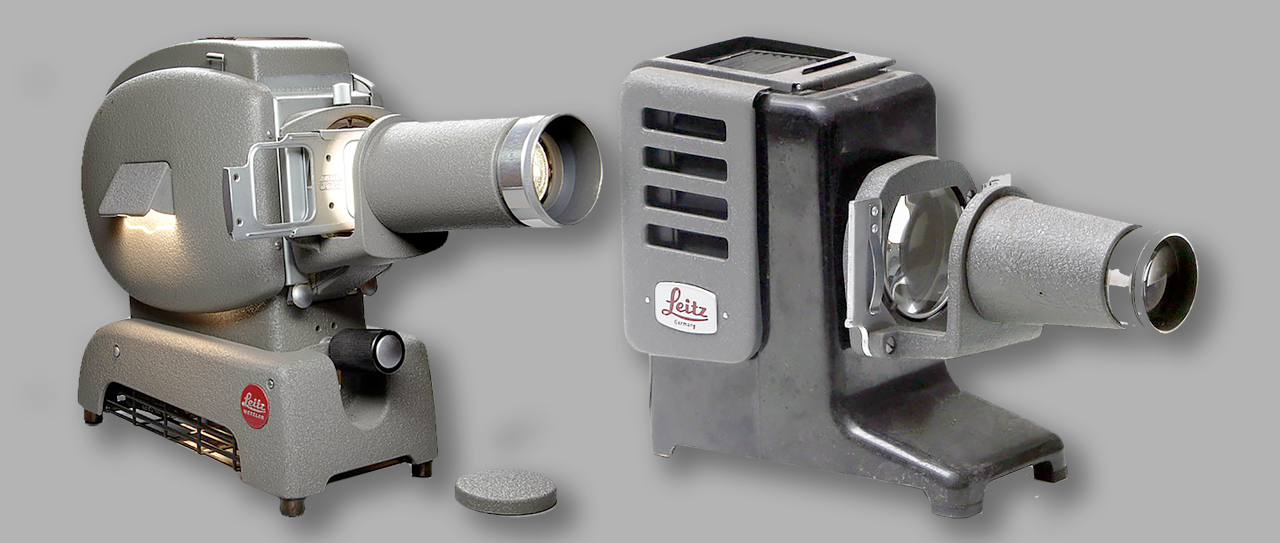
Two Leitz Projectors from after World War II: the Leitz Prado BW from ± 1955 (left) and the Leitz Prado 150 from the 1950s. (right)
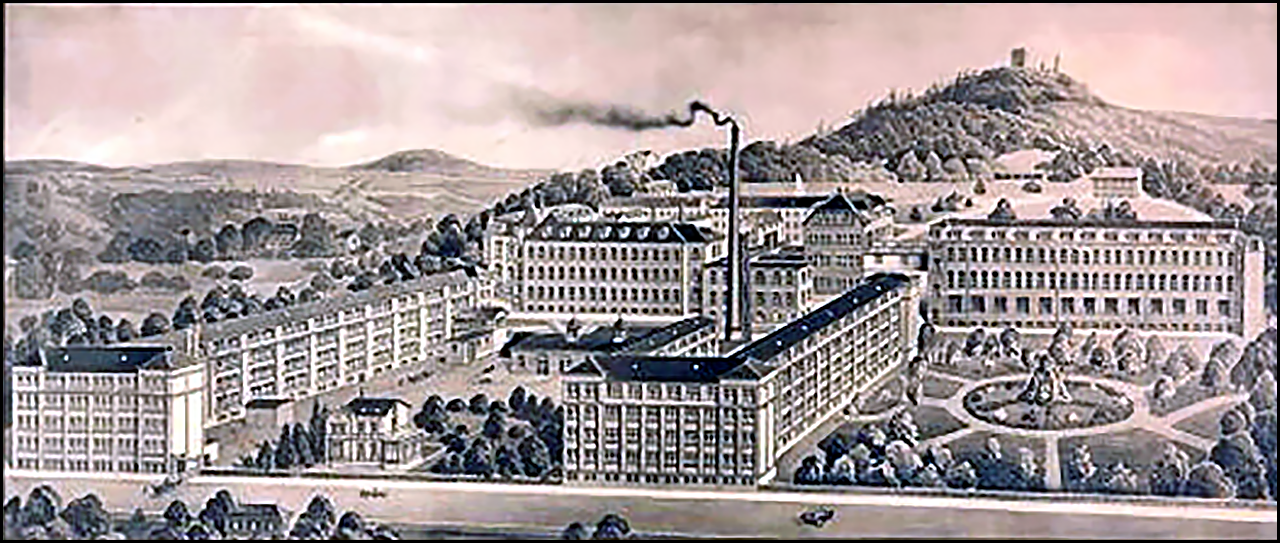
The E. Leitz Company Site in 1929.
After the war, the German patent was no longer protected
In 1942, Ernst Leitz GmbH employed a total of 195 foreign citizens. By January 1945, there were 989 forced labourers, 643 of them “Ostarbeiter”, predominantly from Ukraine, and 316 “Westarbeiter” from France and the Benelux.
Post-war Leica-models bear the initials DBP, standing for Deutsches Bundespatent (Federal German Patent), instead of the DRP (Deutsches Reich patent) found on pre-war models.
 A number of camera companies have built models based on the Leica rangefinder design. These include the Leotax, Nicca and early Canon models in Japan, the Kardon in USA, the Reid in England and the FED and Zorki in the USSR.
A number of camera companies have built models based on the Leica rangefinder design. These include the Leotax, Nicca and early Canon models in Japan, the Kardon in USA, the Reid in England and the FED and Zorki in the USSR.
After the war, Leitz continued to produce the late versions of the Leica II and the Leica III through the 1950s. However, in 1954, Leitz introduced the Leica M3, with the new Leica M mount, a bayonet-like lens mount.
Besides cameras and microscopes, Leitz developed further optical products that would define the mid-20th century, such as slide projectors of the “Prado” series, Leitz episcopes that were frequently used in schools and the Trinovid binoculars series.
The period after WWII to the present
One by one, the three sons (Ludwig, Ernst and Günther) of Ernst Leitz II began work at the company. Having remained intact through World War II, the production facilities could be restarted immediately after the war ended.
In 1948, a separate development lab for optical glass was added, and from 1953, the design of microscope optics was computer-assisted. Upon the death of their father in 1956, the three sons jointly assumed leadership of the company.
 From 1964, Leica produced a series of single-lens reflex cameras, beginning with the Leicaflex, followed by the Leicaflex SL, the Leicaflex SL2, and then the R series from R3 to R7, made in collaboration with the Minolta Corporation.
From 1964, Leica produced a series of single-lens reflex cameras, beginning with the Leicaflex, followed by the Leicaflex SL, the Leicaflex SL2, and then the R series from R3 to R7, made in collaboration with the Minolta Corporation.
The Leica R8 was entirely designed and manufactured by Leica. The final model was the Leica R9, which could be fitted with the Digital Module back.
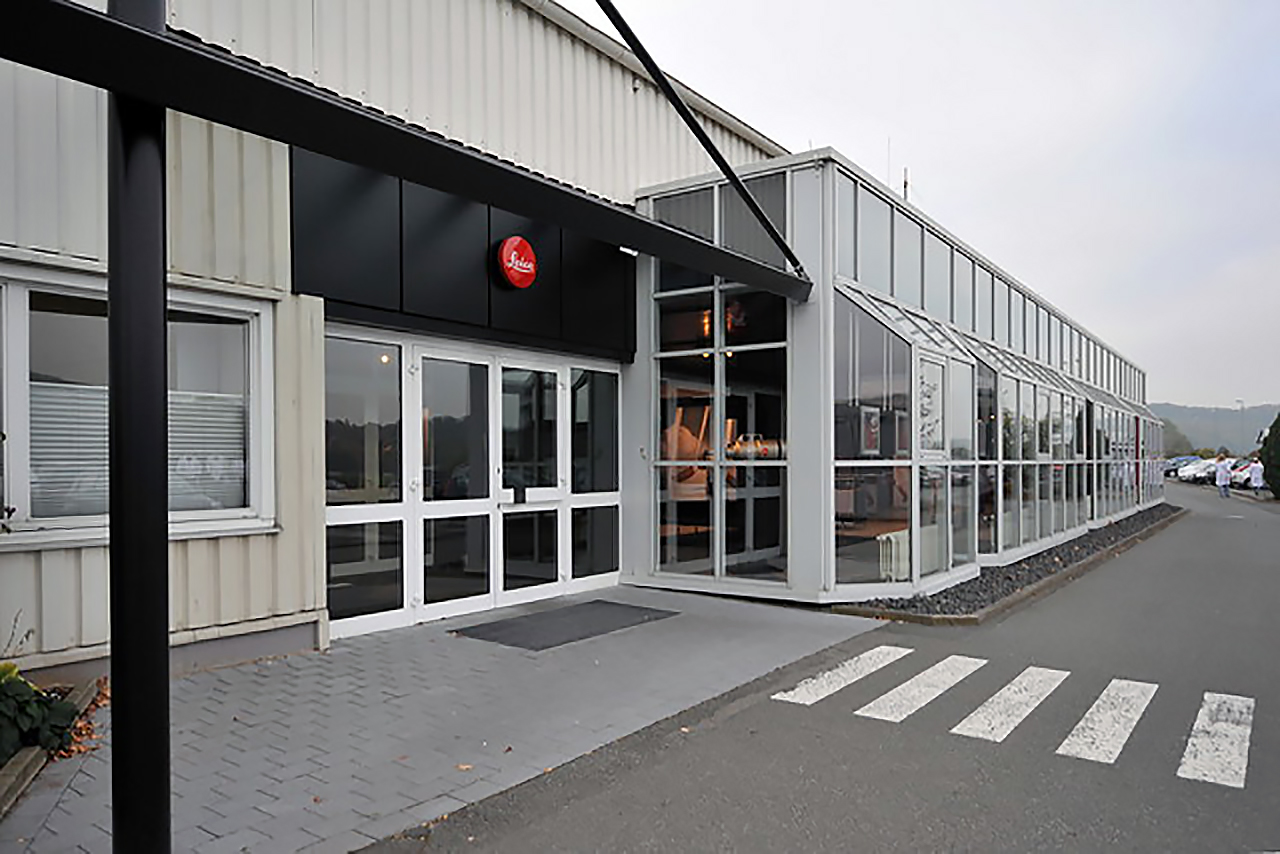
The main entrance of the old Leica Camera site in Solms. Even since Leica Camera AG moved from their previous headquarters in Solms to the new facility at Leitz Park in Wetzlar, many have been wondering what would happen to the old plant in Solms. The simple answer is – nothing yet. Since September 2014 it was told that Leica is keeping the plant to have room for expansion in the future, should that be necessary.
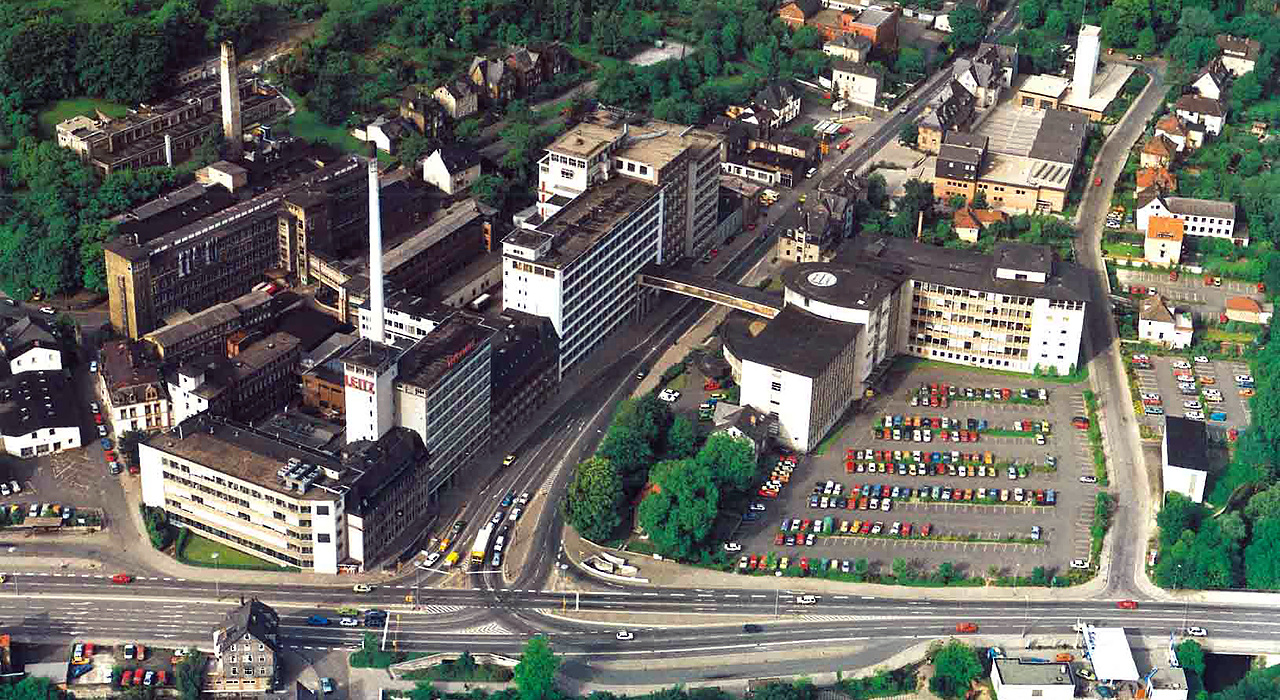
Aerial view of the Leitz factories in Wetzlar in 1970.
Moving from Wetzlar to Solms and back
In 1986, the Leitz company changed its name to Leica (LEItz CAmera), due to the fame of the Leica tradename. At this time, Leica relocated its factory from Wetzlar (Germany) to the nearby town of Solms (Germany). In 1996, Leica Camera separated from the Leica Group and became a publicly owned company. In 1998, the Leica group was divided into two independent units: Leica Microsystems and Leica Geosystems.
On 1 October 2012, Leica Camera AG was delisted from the Frankfurt Stock Exchange after Lisa Germany Holding GmbH acquired the remaining minority shares stock resulting in the company being owned privately.
In May 2014, Leica Camera AG finished building a new factory at Leitz Park 1 in the new industrial part of Wetzlar and relocated back to the city where it started.
The original manufacturer of the cameras, Ernst Leitz GmbH, is now three independent companies: Leica Camera AG, Leica Geosystems AG, and Leica Microsystems GmbH, which manufacture cameras, geo survey equipment, and microscopes, respectively. Leica Microsystems GmbH owns the Leica brand and licenses its use to the other two companies.
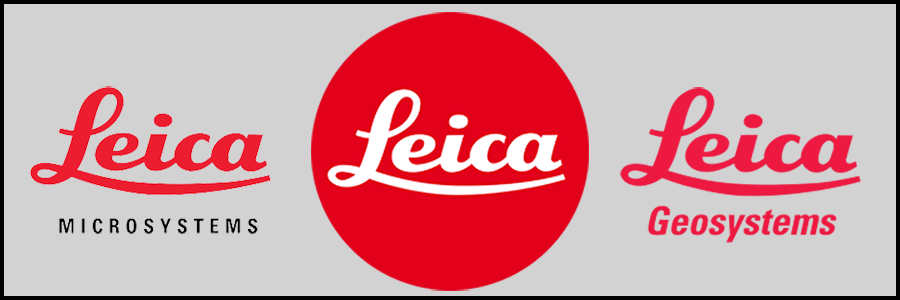
The company provided a.o. following products:
Projectors
- Leitz Prado 250
- Leitz Prado Universal
- Leitz Pradovit C 2500
- Leitz Pradovit CA 1500
- Leitz Pradovit Color 110
- Leica Pradovit P 150
- Leica Pradovit P 300
- Leica Pradovit P 300 IR
- Leitz Pradovit RC
- Leitz Pradovit RT-200
- Leica Pradovit RT-s
other
- Leitz Synchronblitzer flash gun
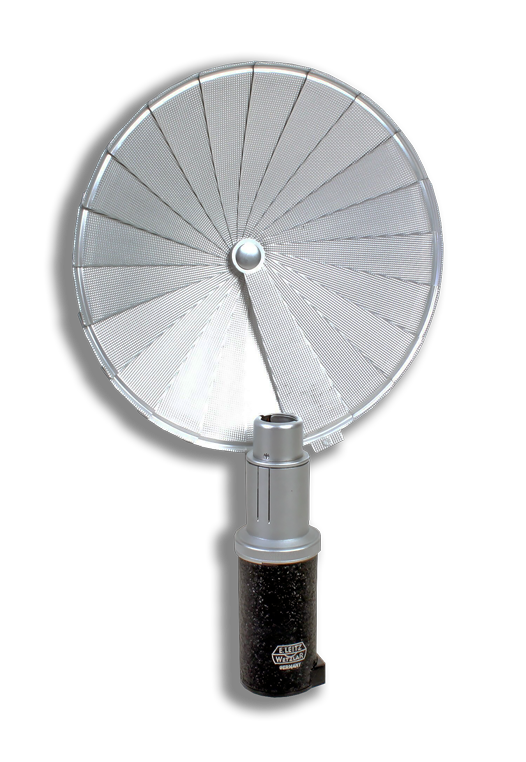
The Leitz Synchronblitzer is a flashgun for flashbulbs. It was made by Leitz in Wetzlar. It needs a 22.5 Volts battery. It has a foldable fan reflector.
Enlargers
- Leitz Flyt
- Leitz Focomat Ia
- Leitz Focomat Ib
- Leitz Focomat Ic
- Leitz Focomat Ic Color
- Leitz Focomat IIa
- Leitz Focomat IIa color
- Leitz Focomat IIc
- Leitz V35 AF
- Leitz Valfa
- Leitz Valoy
- Leitz Valoy II
- Leitz Vamax
- Leitz Varyl
- Leitz Vitox
Instant cameras
- special purpose camera for making 4 images on one polaroid sheet
- Leica Sofort (2017) uses Fujifilms Instax mini film
Rifle cameras
- Leica RIFLE — Leica camera mounted on a rifle stock
Aerial cameras
- Leitz Canada KE-28B
microscope cameras
- Leitz Wetzlar 9×12 cm Makam 1x
- Leitz Microscope 9×12 cm Camera
APS cameras
- Leica C11
35mm Fixed lens
- Leica 0, preseries (“null serie”)
- Leica A (fixed lens)
- Leica B (only model w/ leaf shutter)
35mm Screw-mount lens
- Leica C non-standardized
- Leica C standardized = Leica I
- Leica D = Leica II (first type w/ built-in rangefinder)
- Leica E = Leica Standard = Leica I (improved standardized C)
- Leica F = Leica III (like II but with slow speeds on frontal dial)
- Leica G = Leica IIIa (adds 1/1000 speed)
- Leica IIIb (rfdr. and viewer windows close together)
- Leica IIIc (die cast body, slightly longer)
- Leica IIc (same body as IIIc but without slow speeds)
- Leica Ic (has two accessory shoes, die cast body similar to IIc but without rangefinder)
- Leica IIId (version of IIIc with self-time lever, very few were produced)
- Leica IIIf (postwar improvements, and some have self-timer lever)
- Leica IIf (no slow speed dial, but other improvements like IIIf)
- Leica If (has two accessory shoes, die cast body similar to IIf but without rangefinder)
- Leica IIIg (change in body configuration)
- Leica 250 Reporter (has huge film magazines)
- Leica half-frame (version of IIIc)
- Single Exposure Leica
M-mount Rangefinders
- Leica M1
- Leica M2
- Leica M3
- Leica M4
- Leica MD
- Leica MD-2
- Leica M4-2
- Leica M4-P
- Leica M5
- Leica M6
- Leica M6J
- Leica M6 TTL
- Leica M7
- Leica MP – 1956
- Leica MP – 2003
- Leica M-A
M-mount Lenses
Leica produced and still produce many lenses for the famous M-mount. The Lenses are named based on their aperture.
- Noctilux f0.95-f1.2
- Summilux f1.4
- Summicron f2
- Summarit f2.5
- Elmarit f2.8
- Elmar, Super-Elmar f3.5-f4
- Hektor f4.5
SLR
- Leicaflex (1964–68)
- Leicaflex SL and SL Mot (1968–74)
- Leicaflex SL2 and SL2 Mot (1974–76)
- Leica R3 and R3 Mot (1976–79)
- Leica R4 mot electronic
- Leica R4
- Leica R4s
- Leica R4s-2 (R4s-P in North America)
- Leica R5
- Leica R-E
- Leica R6
- Leica R6.2
- Leica R7
- Leica R8
- Leica R9
Autofocus
Many Leica-branded compacts used electronics from Panasonic, and may have actually been manufactured by the Japanese company.
- Leica AF-C1 (1989)
- Leica C2-Zoom (1991)
- Leica Mini (1991)
- Leica Mini II (1993) (see also Panasonic C-625AF Super Mini and Minolta Freedom Escort)
- Leica Mini Zoom (1993)
- Leica Mini III (1996)
- Leica Minilux (1995)
- Leica Z2X (1997)
- Leica Minilux Zoom (1998)
- Leica C1 (2000)
- Leica C2 (2002)
- Leica C3 (2002)
- Leica CM(2004)
- Leica CM Zoom (2004)
Pictures of Wetzlar
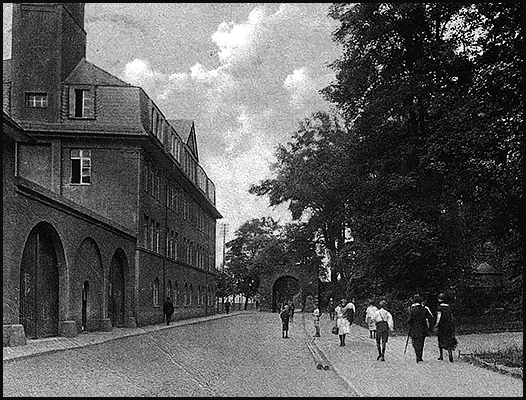
1915 – Hausertor factory
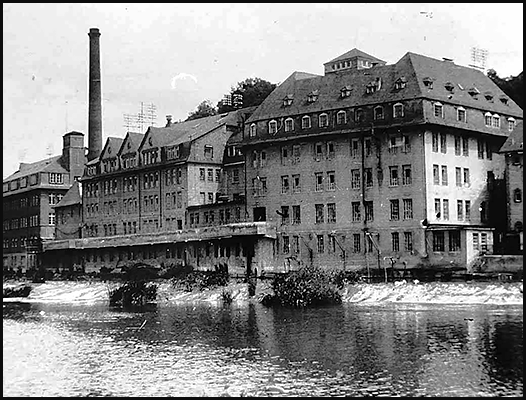
1919 – Hausertor factory seen from the Lahn side
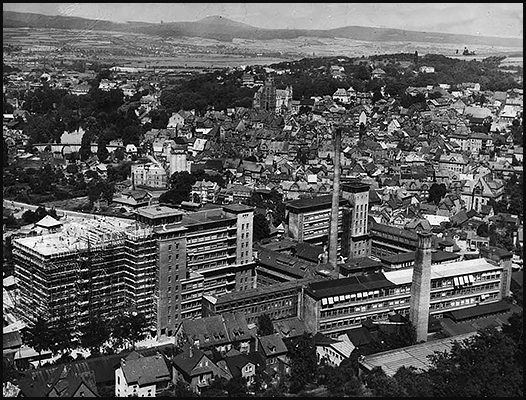
1940 Construction of the second high-rise building at Leitz works
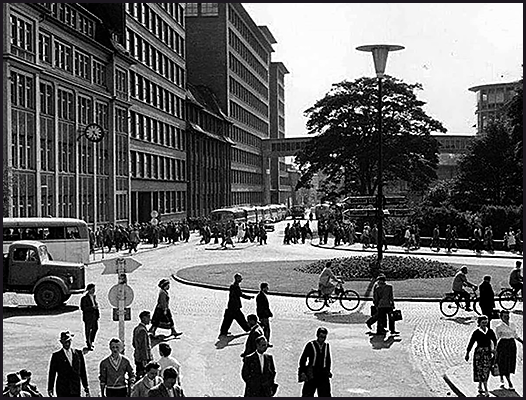
1950s Leitz Square.
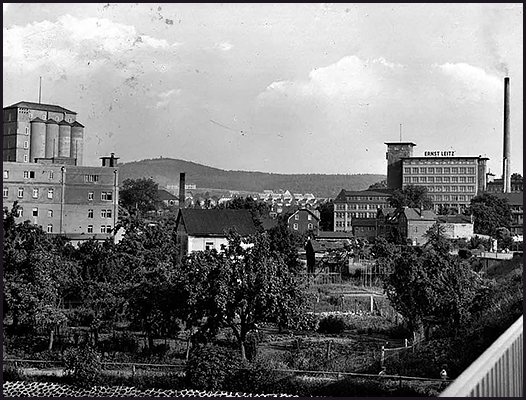
1950 Amend Mill and Bypass.
Pictures of solms
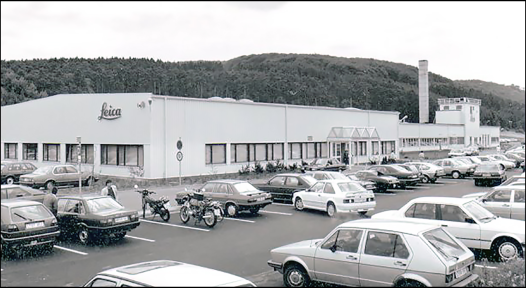
1986 Full of activity in Leica Solms.
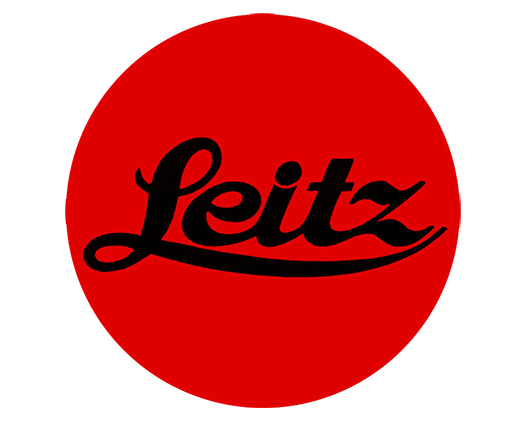
COMPANY NAMES:
Lensless Camera Manufacturing Company; C.H. Levy and Company dba; Pinhole Camera.
COMPANY ADDRESS:
2023 (?): 809 Lark Drive, Fernley Nevada 89408.
Strictly speaking, Lensless Camera Manufacturing Company is not one of those large, important, or influential companies reviewed on this site. No, better yet, it’s even unclear if the company still exists.
But important or not, I felt I had to make way for a company that still builds wooden cameras in this digital age and even without a lens. So here’s a report on what I’ve been able to find on the internet about this company.
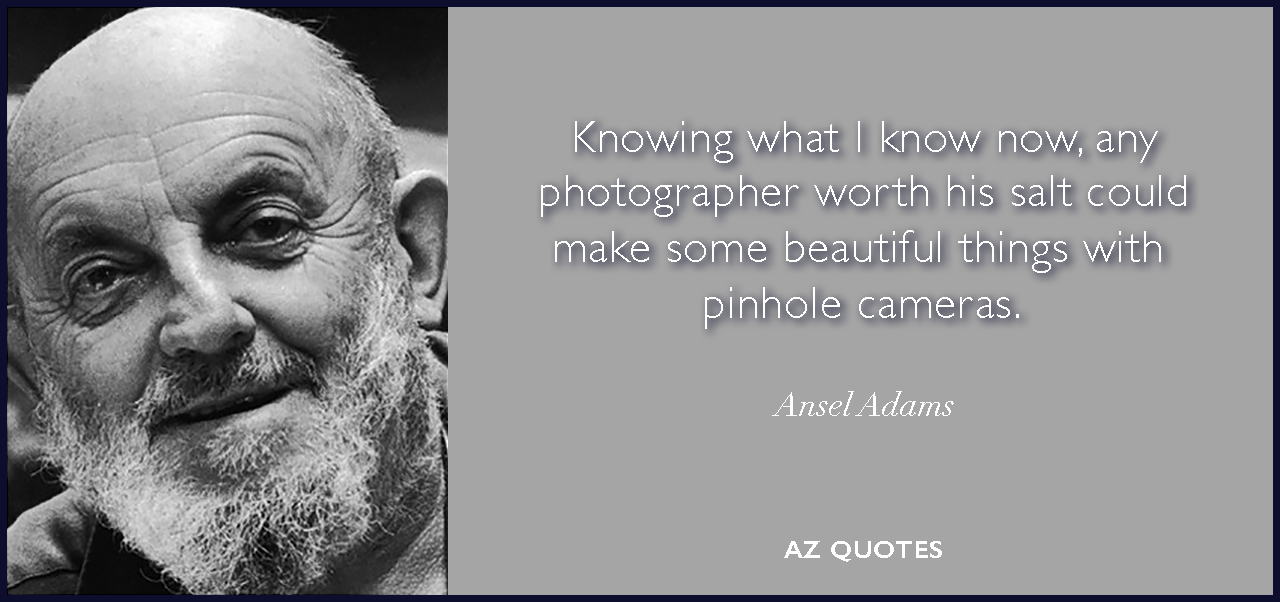
A quote of the famous American landscape photographer Ansel Adams.
The Lensless Camera Manufacturing Company offers a line of hand crafted, made in America, pinhole cameras in various film sizes and focal lengths. The standard cameras are made from 1/2″ 9 laminate birch (walnut stained with polyurethane finish) and have standard vertical and horizontal brass tripod inserts. Special order cameras are available in Mahogany and custom formats.
The unique camera designs make it possible to use cut film holders or Polaroid backs such as those used with lensed cameras, thus eliminating the need to load the camera in the darkroom. Of course if you prefer, you can still load the film in the darkroom the traditional way by using the back that comes with the camera.
Using the Tri-X 400 ASA or #52 Polaroid, exposure time in bright noon-day sun is about 4 seconds. If you would like to use your own pinhole the one installed in the camera is easily removed.
Lensless Camera Manufacturing Company is a camera maker based in the little boomtown Fernley, Nevada. It makes hand crafted hard wood pinhole cameras from premium selected hard woods for large format photography.
The main product line are pinhole box cameras made of laminated birch wood, deliverable for the plate sizes 4×5, 5×7, 8×10 and 11×14. The luxury hardwood variants are the 4×5 model but made of mahogany, oak, teak or zebra wood. The cameras have a shutter on the front side and a plate-holder fixing facility in the back which allows usage of different kinds of plate holders or sheet film holders.
Each model (plate size and wood variant) is available in four versions: super wide angle, wide angle, 1:1 or telephoto.
A unique feature of pinhole cameras is that depth of field is of no concern sample photos.; everything in front of the camera is equally in focus. This was the reason that Ansel Adams used this type of camera for many of his nature shots. You can get countless different effects by bending the film, putting it in diagonally, or by wadding up the negative.

From left to right: Mahogany, Oak, Teak and Zebrawood.
4″ X 5″ Format:
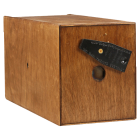
- 225mm 9″ Telephoto
- 150mm 6″ 1:1
- 75mm 3″ Wide Angle
- 50mm 2″ Super Wide Angle
5″ x 7″ Format:
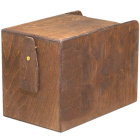
- 300mm 12″ Telephoto
- 200mm 8″ 1:1
- 125mm 5″ Wide Angle
- 75mm 3″ Super Wide Angle
This pinhole camera features a focal length equivalent of 75mm, which is a very wide angle lens for this format. A starting-point exposure with ISO 400 film in bright noon-day sun is 2 seconds. Since it is designed to accept a sheet film holder, there is no need to load the camera in the dark.
8″ x 10″ Format:
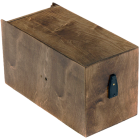
- 450mm 18″ Telephoto
- 300mm 12″ 1:1
- 150mm 6″ Wide Angle
- 100mm 4″ Super Wide Angle
The Laminate Birch, 8×10″ Pinhole Camera, with a focal length equivalent of 100mm, which is a super wide angle lens for this format. Average exposure in bright, noon-day sun is 4 seconds, using 400 ISO film.
11″ x 14″ Format:
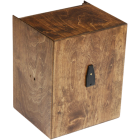
- 675mm 27″ Telephoto
- 450mm 18″ 1:1
- 225mm 9″ Wide Angle
- 150mm 6″ Super Wide Angle
The Laminate Birch, 11 x 14″ Pinhole Camera, with a focal length equivalent of 150mm, which is a super-wide angle for this format.
Mahogany & Oak
4″ x 5″ Format:
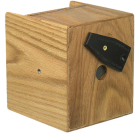
- 225mm 9″ Telephoto
- 150mm 6″ 1:1
- 75mm 3″ Wide Angle
- 50mm 2″ Super Wide Angle
This is a oak wood, 4 x 5″ Pinhole Camera, with a focal length of 225mm, which is a telephoto perspective for this format. Average exposure in bright, noon-day sun is 4 seconds, using 400 ISO film.
4″ x 5″ Format:
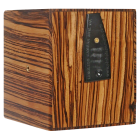
- 225mm 9″ Telephoto
- 150mm 6″ 1:1
- 75mm 3″ Wide Angle
- 50mm 2″ Super Wide Angle
This is a zebra wood, 4 x 5″ Pinhole Camera, with a focal length of 225mm, which is a telephoto perspective for this format. Average exposure in bright, noon-day sun is 4 seconds, using 400 ISO film.
FOUNDER: Valentin Linhof
COMPANY NAME:
Linhof Präzisions-Systemtechnik GmbH München.
Rupert-Mayer-Strasse 45, 81379 Munich.
Linhof is well known for making premium rollfilm and large format film cameras. The company began by making camera shutters, and Linhof developed the leaf shutter, which became part of Compur. Today Linhof is the oldest still-producing camera manufacturer in the world after Gandolfi and Kodak stopped their production.
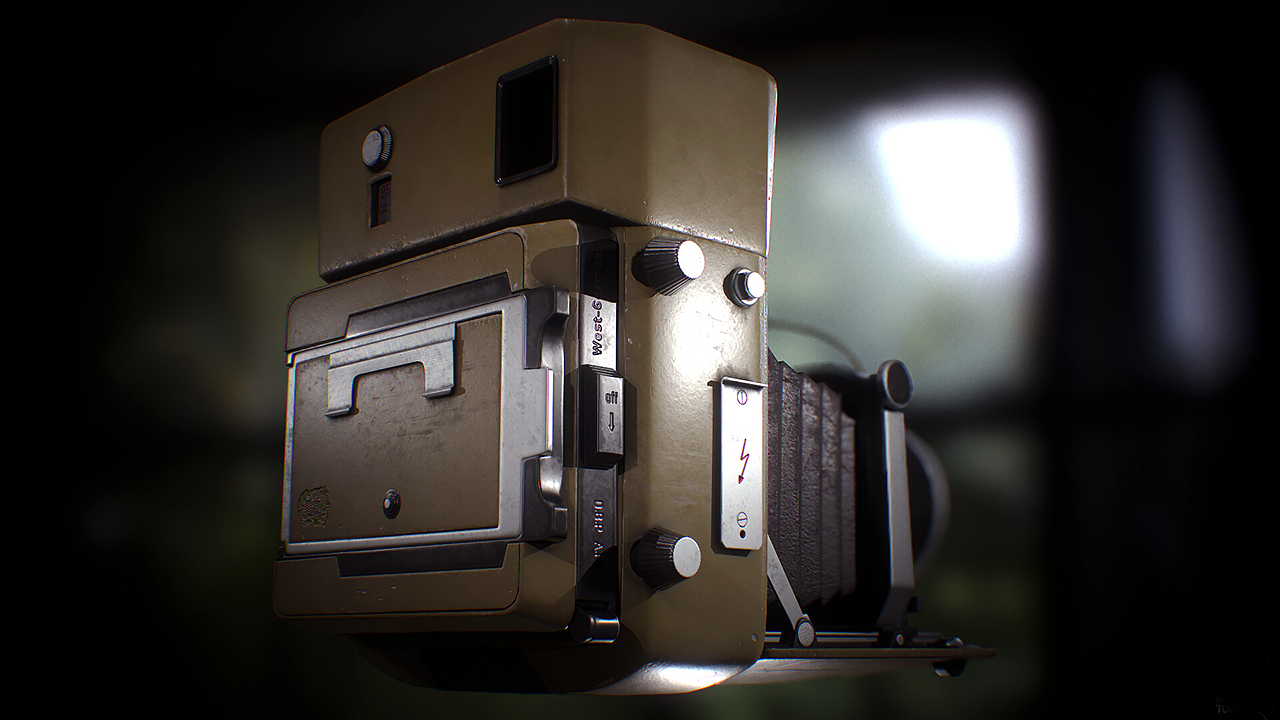
Ambience image of a Linhof camera during a studio session.
GROWTH
The steady expansion of the premises demonstrates the growth of the firm. Valentin Linhof moved his small workshop several times to various addresses in central Munich. By the time Nikolaus Karpf started there in 1933, the works occupied a floor space of just over 1 000 square feet.
The rapid growth of sales made expansion inevitable. In 1935 the firm leased further premises a few streets away to serve as machine shops. Administration and shipping departments had to go elsewhere again, with the assembly workshops at yet another location. Obviously it was highly inefficient in the long run to have the firm strewn all around old Munich.
Nikolaus Karpf therefore bought the present plot at 45 Rupert-Mayer-Strasse on the southern outskirts of the town and on 17th May 1941 started building a new plant there. The whole of the Linhof works moved in a year later.
The war and aerial bombardment temporarily halted production; two heavy air raids destroyed over 60 percent of the newly built factory.
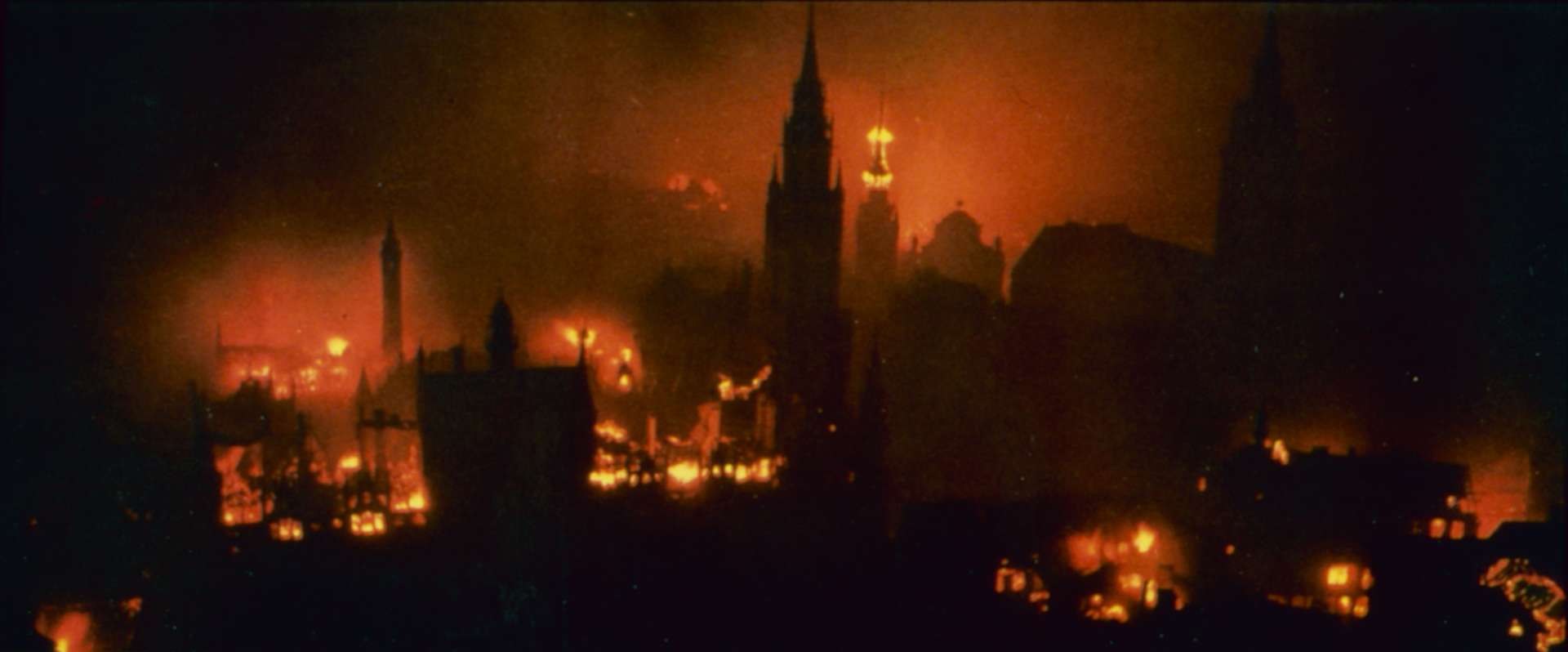
 Linhof publicity went far beyond buying advertising space. Every purchaser of a camera was also provided with the theoretical knowhow.
Linhof publicity went far beyond buying advertising space. Every purchaser of a camera was also provided with the theoretical knowhow.
A novel promotion effort was Nikolaus Karpf’s own design of the first general catalogue of 1937. Apart from listing the full product range it was a comprehensive applications handbook Technika photography.
Other publications such as the ‘Linhof Telegramm’ and ‘Linhof Informationen’ addressed to Linhof dealers reported on new developments and in-house news such as quality control and endurance testing.
 Born in 1854 in Holzkirchen in Bavaria, Valentin Linhof served a precision engineering apprenticeship with instrumentmakers Bohm & Wiedemann in Munich, and later ran a department of Dr. Hugo Schroder’s well-known astro-optical workshop in Hamburg.
Born in 1854 in Holzkirchen in Bavaria, Valentin Linhof served a precision engineering apprenticeship with instrumentmakers Bohm & Wiedemann in Munich, and later ran a department of Dr. Hugo Schroder’s well-known astro-optical workshop in Hamburg.
When in 1887 he eventually started his own firm in Munich, Valentin Linhof hardly envisaged the future international fame of Linhof cameras, culminating in their launching into space.
Initially Linhof made scientific instruments – and shutters for magazine cameras. He supplied a circular leaf shutter to C. A. Steinheil Söhne, and to leading camera makers, including Goerz, Kodak, and Zeiss. In 1898 Valentin Linhof also produced a first all-metal camera. Current folding baseboard cameras still incorporate features based on his inventions.
At his death in 1929 he had virtually perfected his camera with tilt and shift movements on the lens carrier.
The Nikolaus Karpf period
 In 1933 Nikolaus Karpf joined the firm as a young engineer. Born in 1912 in Munich, he had become an expert in precision fabrication and machining and soon found himself in charge of this small mechanical workshop.
In 1933 Nikolaus Karpf joined the firm as a young engineer. Born in 1912 in Munich, he had become an expert in precision fabrication and machining and soon found himself in charge of this small mechanical workshop.
One of his first jobs was to take up the development of the Linhof camera. By 1934 a German patent application No. 639520 specified a camera with a ground glass screen frame movable in all directions.
Thanks to this swing-and-tilt frame the newly designated Technika camera rapidly became a market leader. Just when the 35 mm miniature started its meteoric rise, Nikolaus Karpf devoted all his efforts to the large-format camera.
Appointed managing director in 1936, Karpf followed through his development policies that eventually turned Valentin Linhof’s workshop of originally seven mechanics into a modern industrial concern with – at its peak – over 800 employees.
Back in the 1930s Linhof started to make revolutionary all-metal tripods. Further development stages led to the design and production of a range of professional medium and large format cameras, big studio and industrial camera stands and accessories.
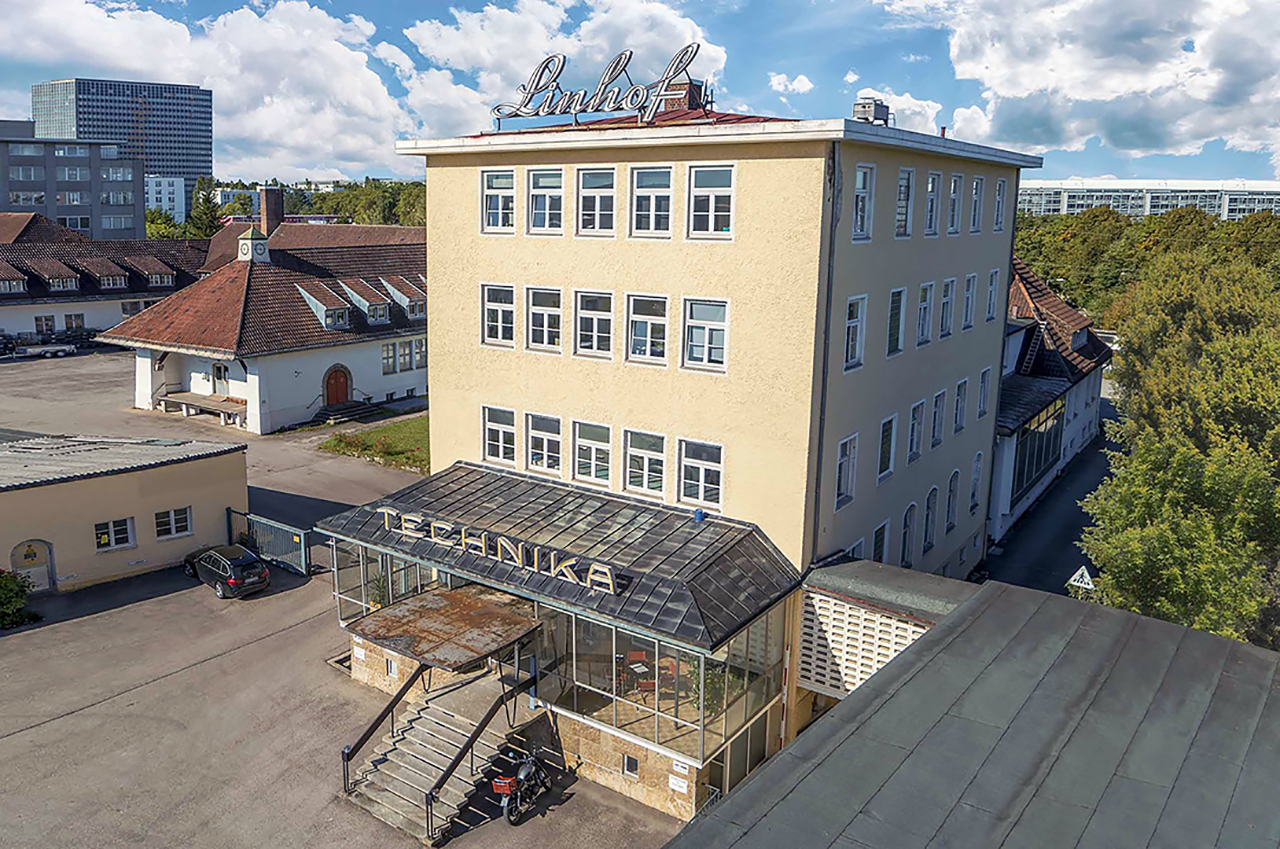
Main building, Linhof GmbH, Munich
Construction and reconstruction after WorldWar II
Following the total wartime destruction of the Rupert-Mayer Strasse factory, Nikolaus and his brother Georg Karpf started rebuilding in 1945.
 In the following years Nikolaus Karpf set up a series of companies: The Nikolaus Karpf Bau GmbH (a building corporation for employees housing), Photo Technik International (the publishing company of photography’s leading professional periodical in English and German), Linhof Vertriebs-GmbH (an importer and distributor of high-class rollfilm camera systems, studio flash equipment and related products) and a pension and support organisation to take care of retired Linhof staff.
In the following years Nikolaus Karpf set up a series of companies: The Nikolaus Karpf Bau GmbH (a building corporation for employees housing), Photo Technik International (the publishing company of photography’s leading professional periodical in English and German), Linhof Vertriebs-GmbH (an importer and distributor of high-class rollfilm camera systems, studio flash equipment and related products) and a pension and support organisation to take care of retired Linhof staff.
Reconstruction of the plant at 45 Rupert-Mayer-Strasse was not easy; it was only in 1949 that Nikolaus Karpf was able to concentrate fully on the job.
The firm continued to grow. By the early 1950s it reached ten times its wartime production. In 1953 Linhof’s exports went to 93 countries, leading markets being the USA, Brasil, Sweden, Switzerland, the Netherlands and Norway.
The works again became crowded and Linhof was obliged to move tripod production to Geretsried-Gartenberg some 20 miles south of Munich.
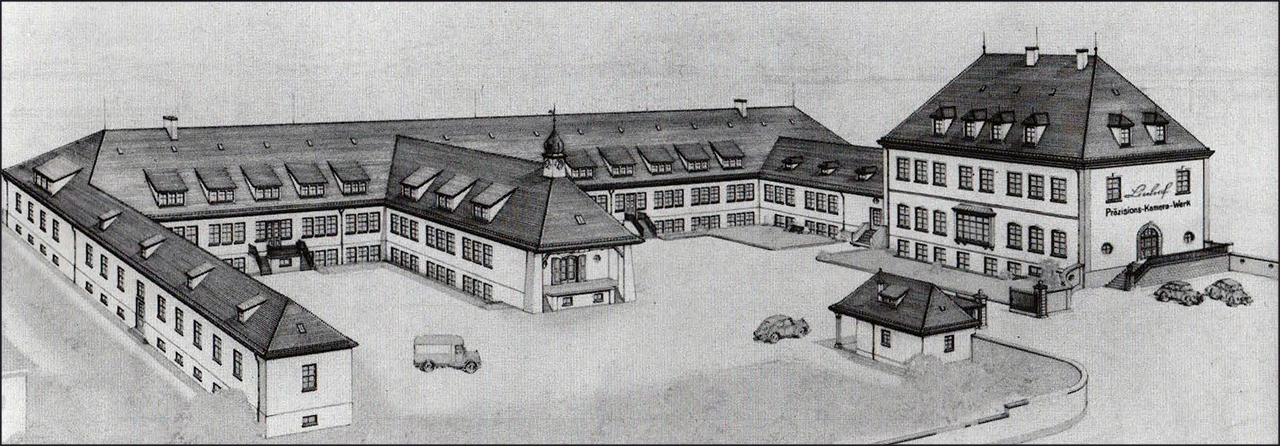
The Linhof plant in Munich in the early Fifties.
Construction and reconstruction after WorldWar II (continued)
The same year, 1953, further building operations in Rupert-Mayer-Strasse established the reception hall, raised the administration block and produced a social centre with a modern works canteen. Finally, in 1958 further blocks were able to accommodate extensive workshops and offices for the development and patents divisions.
At that time the present research and development division was not yet equipped with computer-aided design (CAD) or computer-aided management (CAM) facilities. But progressive management already relied on R&D for the continuing evolution of the firm.
With the factory expansion, an increase in the workforce went hand in hand. In 1954 a spacious works canteen was built and at the same time new office space was added. Tripod production was transferred to the branch factory in Geretsried-Gartenberg.
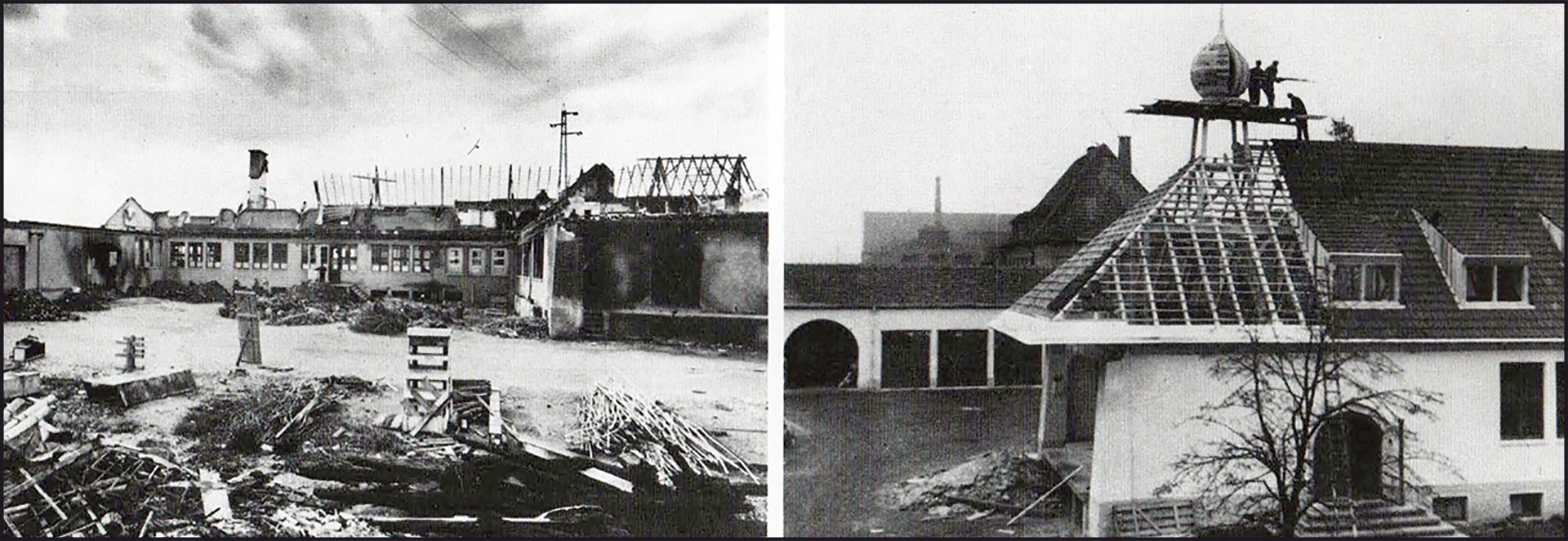
Left: During World War II the factory sustained heavy bomb damage as a result of two air raids.
Right: At the end of the war, Linhof employees soon joined hands to tackle the difficult job of rebuilding the factory.
HOUSING THE STAFF
Housing became a vital priority of the post-war period. Nikolaus Karpf not only rebuilt his factory but in a – for that time unusual – venture also established a housing estate for employees.
Following the foundation of the Nikolaus Karpf Building Corporation, four buildings erected in a southern garden suburb of Munich formed the first Linhof Estate. They comprised 24 apartments totalling over 11 ,000 square feet in floor space.
On 12th October 1953 the Building Corporation set up the structure of the fourth building and formally inaugurated the Estate.
The second major project, completed in 1955, was a new apartment house of 23 living units also in southern Munich, not far from the riverside. Finally, a series of workers’ apartments in Geretsried provided essential accommodation for employees of the Geretsried-Gartenberg tripod works.
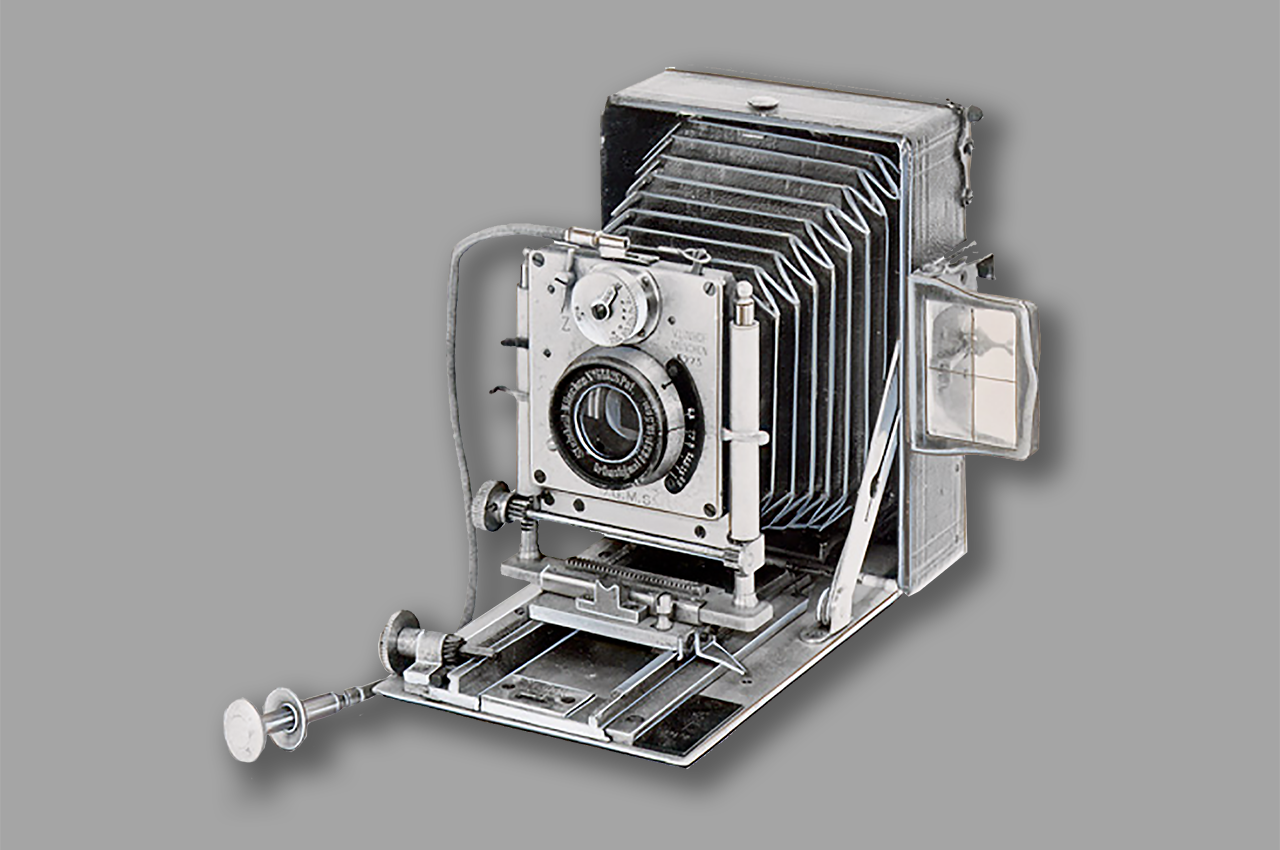
The square 9×12 cm camera dating from 1910, which was made entirely of aluminium.
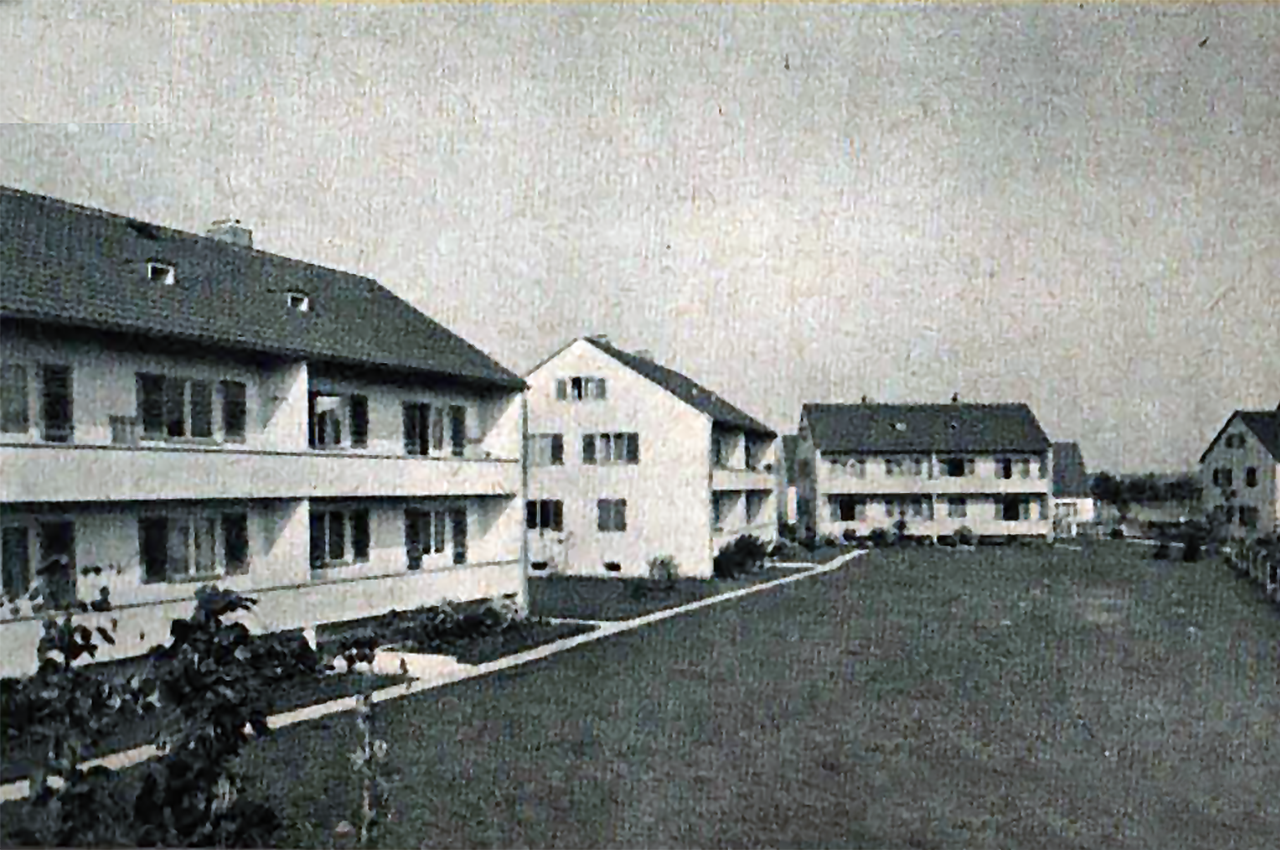
The Linhof residential settlement in the south of Munich was also inhabitated by workers of the plant.
PRODUCTS OF THE FIFTIES & SIXTIES
Shutters preceded the cameras. In 1892 Valentin Linhof received a patent for his circular camera shutter – the first shutter suitable for building into a lens. It provided exposure times from 1 to 1/200 sec. Linhof also designed a stereoscope blade shutter but then dropped shutter manufacture in 1911.
Based on the design of a folding camera by Joseph Barth, a precision engineer from Munich, Valentin Linhof in 1898 constructed his first all-metal camera. This 9 x 12 cm model used aluminium instead brass and came in alternative versions for plates and rollfilm.
It was square: It switched from upright to horizontal pictures by rotating the ground glass screen. There was no need to remove the camera from its tripod.
With his invention of the universal swing-and-tilt frame Nikolaus Karpf perfected Linhof’s camera to the legendary Technika (named from ‘Technische Kamera’). First launched in 1935, this underwent numerous improvements and modifications. It is still the embodiment of a professional precision camera.
The Technika
Linhof history is closely associated with the evolution and perfection of the folding baseboard camera. The Technika became the archetype of the technical camera. Encyclopaedias list it as as a typical top-level camera, along with the Leica and Rolleiflex. Valentin Linhof’s contribution was the square metal body for rapid upright to horizontal format switching.
Nikolaus Karpf brought with him the swing-and-tilt frame for sharpness distribution control. The Technika prototype was ready in 1934; by 1936 it was in series production in a 6×9 cm and a 9×12 cm version. The rangefinder Technika conquered the US market in 1950.
Thousands of Technikas from the 1960s have remained operative. Altogether 60,000 of these cameras were sold worldwide. Nor have Technika models of those years become collectors’ show pieces – they still are in everyday use.
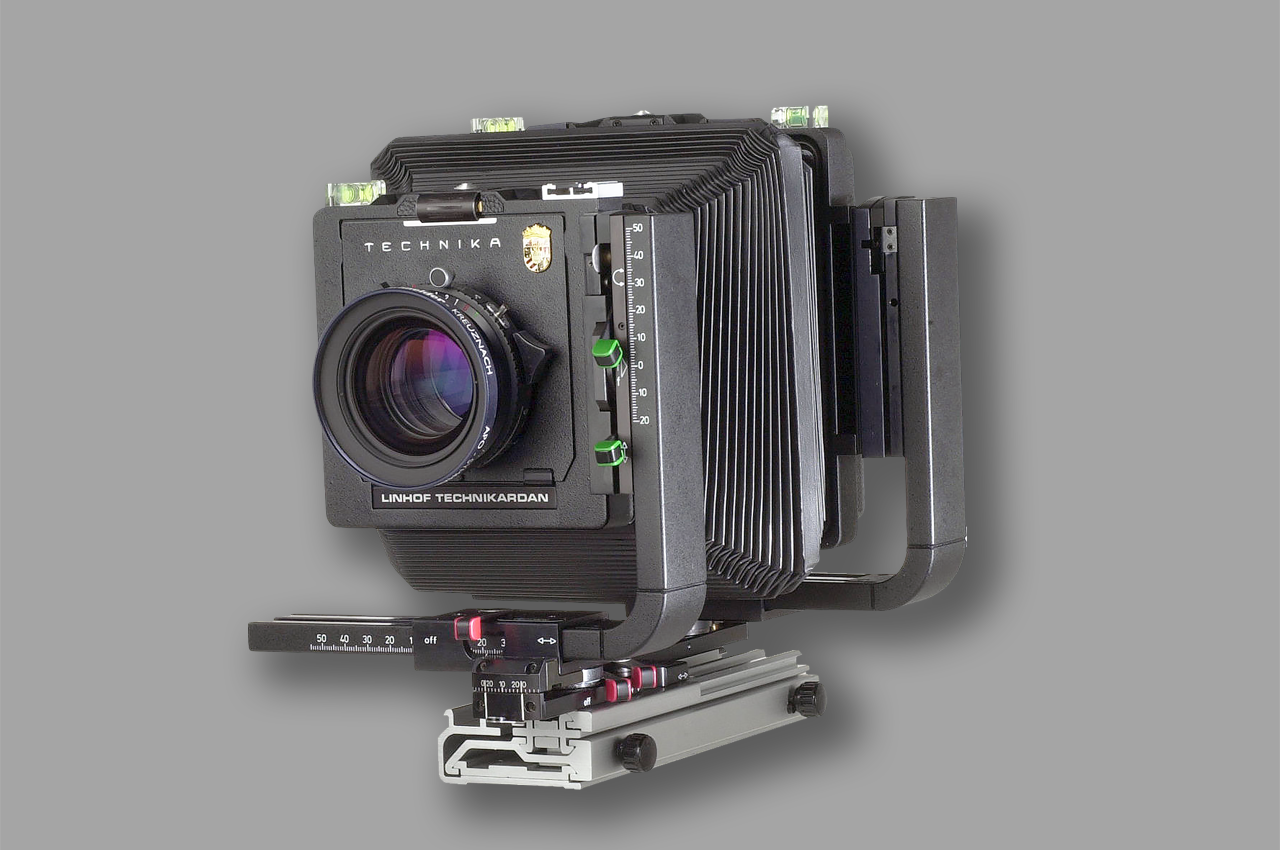
As the name implies, the Technikardan combines the compactness of the classic Linhof Technika drop-bed cameras with the versatility of the Kardan monorail series.
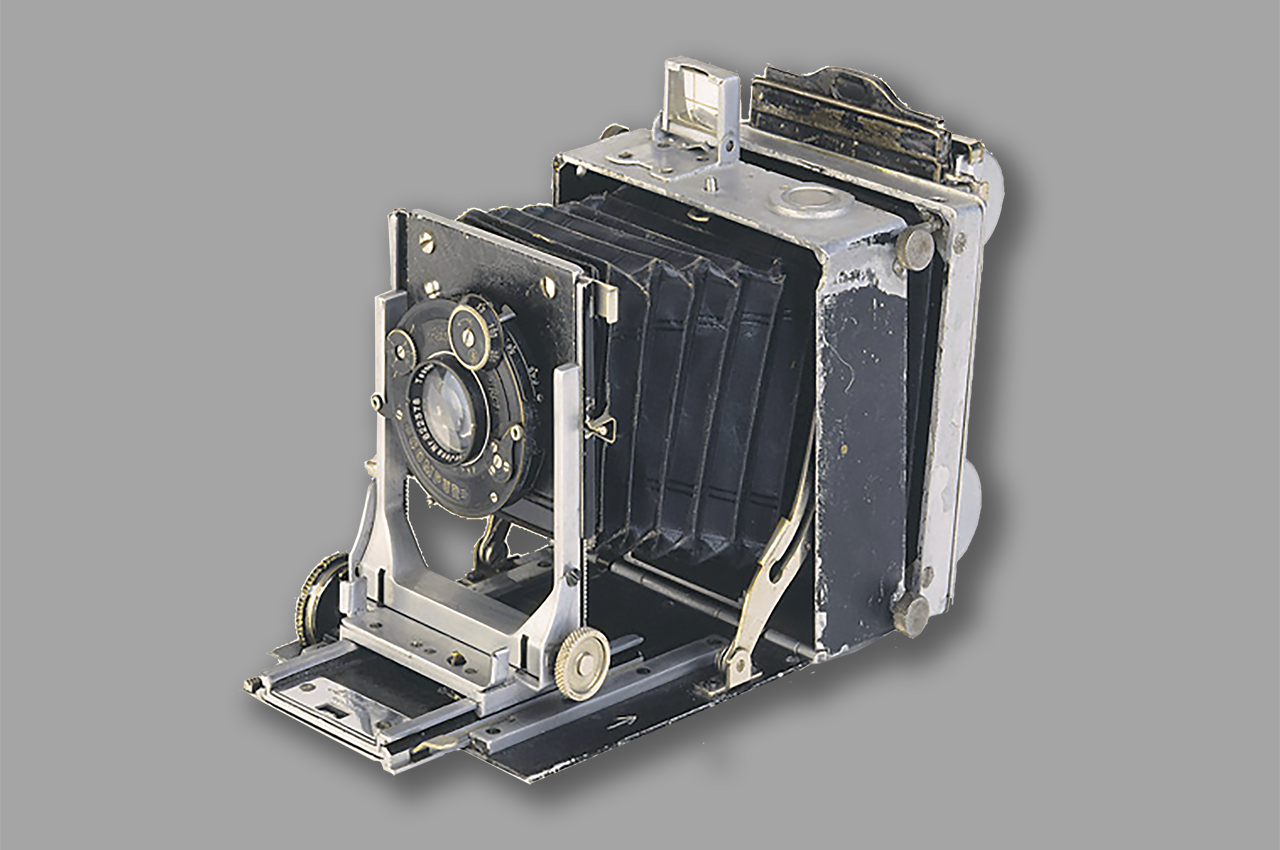
The Ur-Technika camera of 1934.
FURTHER DEVELOPMENTS
The reconstruction period of the 1950s saw also a growth in the requirements and scope of camera movements for perspective control. Linhof therefore developed the monorail Kardan range. The solid cast components and heavy-duty base rail tilt required crane-type studio stands such as the Linhof ‘Gigant’ with eccentric counterweighting.
In the Sixties the monorail range was modified. The first development was called “Kardan Color” to be followed by the legendary model “Kardan B” with more progressive features and a more flexible design suiting less heavy professional tripods made of anodized profile aluminium for outdoor photography.
At his death on 19th September 1980 Nikolaus Karpf passed on a world-famous enterprise with a corporate image that is directly derived from Nikolaus Karpf’s concept of large-format camera precision.
Photographers who need reliable large format equipment and look for German-made precision will remember this traditional Munich manufacturer as the foremost supplier in this field also in the years to come. Here at the Linhof plant, traditional craftsmanship and advanced engineering combine to produce superior equipment that generations will remember for its outstanding value and everlasting quality.
A trip down memory lane:
Linhof production in the last century.
Thanks to the brochure on the occasion of the company’s 100th anniversary and the Linhof website, we can show you a number of shots from Linhof’s production throughout the years.
1) Precision hand crafting is one of the more expensive aspects of large-format camera production; 2) The construction department in the 60s; Nikolaus Karpf is watching an engineer; 3) The final delivery checks are endurance tests for every Linhof product. They cover far more than mechanical functioning and electronic reliability; 4) Computer controlled manufacturing is today indispensable to precision series production; 5) The Linhof Team in 1910; 6) The main building of Linhof GmbH in Munich.
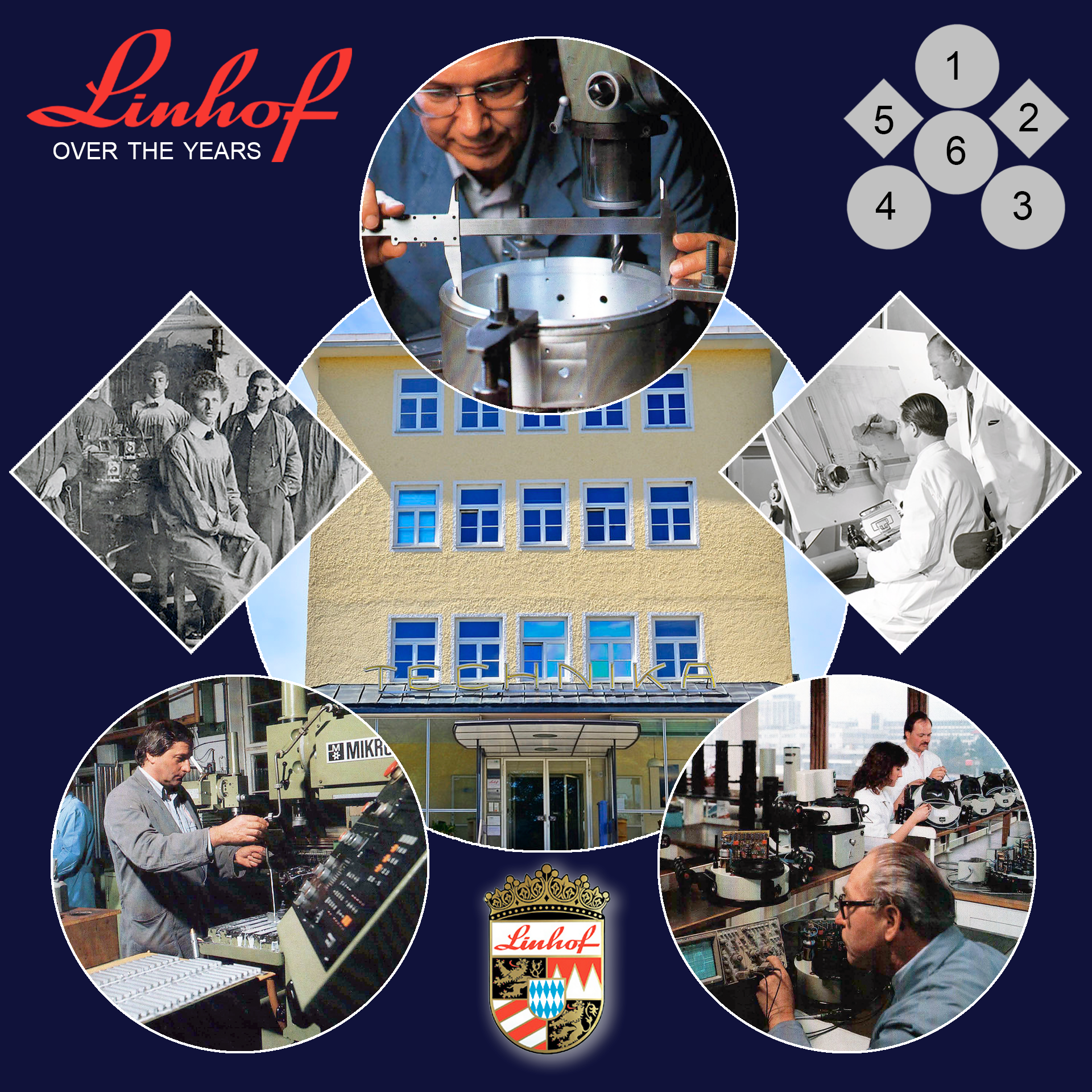
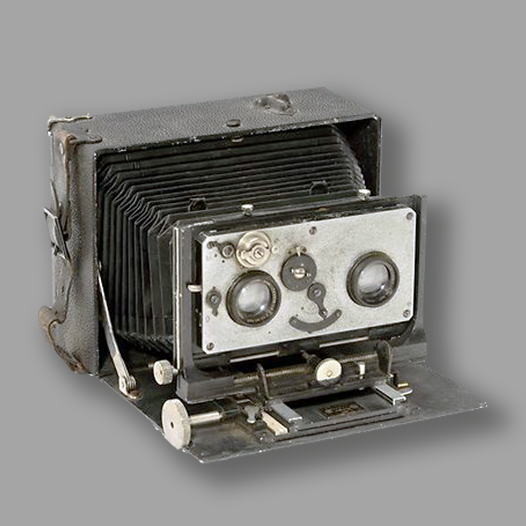
Linhof Precision Camera for 9×14 and 10×15 cm stereo panorama format (1911)
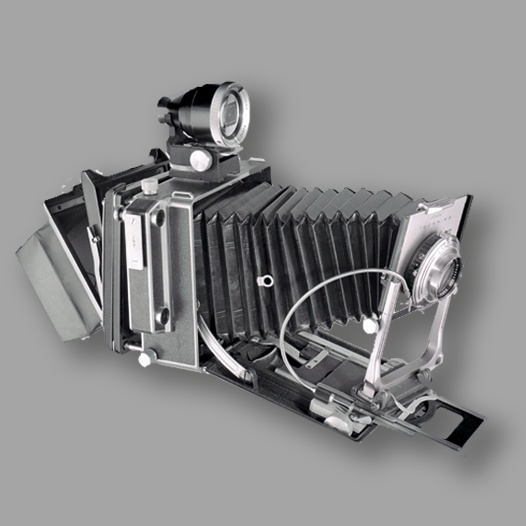
Technika III 9×12 cm/4×5″: Square running floor camera with swivel and rotating frame, triple extension and adjustable standard. Evolved from the Technica II. Production period: 1946 to 1957.
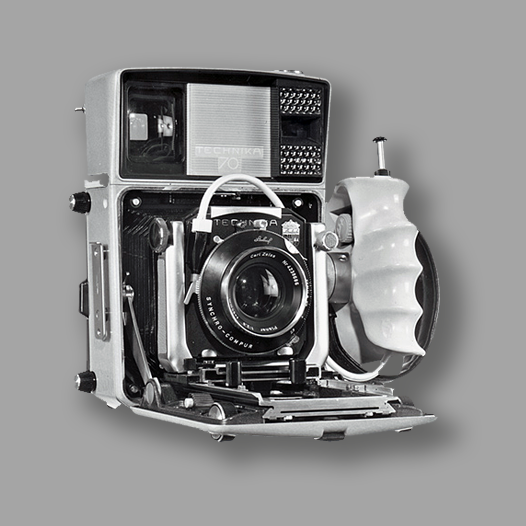
Technika 70, 6×9; Universal walking floor camera in 6.5 x 9 cm format with bright frame viewfinder, built-in exposure meter and coupled rangefinder for three focal lengths. Developed from the Technika 6.5 x 9 cm. Manufacturing period: 1962 to 1979.
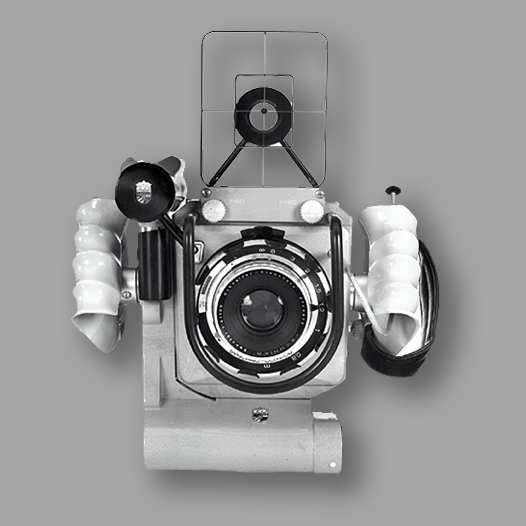
The Linhof Technika 70 is a combination of press and technical designs. Introduced in 1963 by Linhof in Munich, Germany, the Technika 70 was similar in concept (combined range/viewfinder focusing, folding-bed bellows camera of alloy metal construction) to the previous Super Technika’s III and IV.
FORMAT 6×9 cm/2¼x3¼”
- Linhof Ur-Technika (1934)
- Linhof Standard II
- Linhof Technika II
- Linhof Technika III, with or without RF
- Linhof Technika IV
- Linhof Super Technika IV
- Linhof Technika 70 (1962)
- Linhof Studienkamera 70
- Linhof Super Technika V = Super Technika 23
- Linhof Technikardan 23S
- Linhof Techno
FORMAT 9×12 cm/Quarter Plate 3¼x4¼”
- Linhof 34 (1934-1936)
- Linhof Standard II
- Linhof Technika II (1937-1943)
- Linhof Technika Medizin (1937-1943)
FORMAT 9×12 cm/4×5″
- Linhof 34 (1934–1936)
- Linhof Technika Medizin (1937–1943)
- Linhof Standard Press
- Linhof Technika III, with or without RF (1946)
- Linhof Technika IV (1956)
- Linhof Super Technika IV (1956)
- Linhof Technika V (1963)
- Linhof Super Technika V (1963)
- Linhof Master Technika (1972) = Master Technika Classic
- Linhof Master Technika 2000 (March 1995)
- Linhof Master Technika 3000 (2006)
- Linhof Technika-Flex (TLR attachment for Super Technika V)
- Linhof Technikardan 45
- Linhof TechniKardan 45S
- Linhof TechniKardan 23
- Linhof TechniKardan 23S
FORMAT 10×15 cm/4×6″
- Linhof 34 (1934-1936)
- Linhof Standard II
- Linhof Technika II (1937-1943)
FORMAT 13×18 cm/5×7″
- Linhof Technika
- Linhof Technika II
- Linhof Technika III, with or without RF
- Linhof Super Technika V (1962-1986)
- Linhof Technika V (1962-1986) without RF
FORMAT 18×24 cm
- Linhof Präzisionskamera 18×24 (Technika) (1937-1943; only 10 pieces made)
- Linhof Präzisionskamera 18×24 (Technika “Medizin” in grey; only 1 item made, for famous German photographers Adolf Lazi and Franz Lazi)
- Linhof Color 4×5”
- Linhof Kardan 4×5” (1974)
- Linhof Kardan Color 4×5”
- Linhof Kardan GT (1986)
- Linhof Kardan Master GTL (1986)
- Linhof Kardan GTI (1990)
- Linhof Technikardan s45 4×5”
- Linhof Bi
- Linhof Super Color
- Linhof Super Color JBL
- Linhof TL
- Linhof GT
- Linhof GTL
- Linhof Kardan E
- Linhof Kardan M
- Linhof Kardan TE
- Linhof Technikardan s23 2×3”
- Linhof TechniKardan 45 (1984)
- Linhof TechniKardan 45S (April 1993)
- Linhof Techno (2008)
- Linhof M679 6×9 (1996)
- Linhof M679cc 6×9
- Linhof M679cs 6×9
- Linhof Technika Press (1956)
- Linhof Weitwinkelkamera 65
- Linhof Press 70 (1963)
- Linhof 220 (1966, since 1973 in black)
- Linhof 220 PL
- Linhof 220 RS
- Linhof Technar 45 (4×5”) (1978)
FORMAT 6×12 cm
- Technorama 612PC
- Technorama 612PC II
- Technorama 612PC III (Prototype only, presented at 1996 Photokina)
FORMAT 6×17 cm
- Technorama 617 (1976)
- Technorama 617S
- Technorama 617S III
- Aero Press
- Electric 70
- Aerotronica 69 (6×9) (1983)
- Aero Technika (4×5″)
- Aero Technika 45 (4×5″)
- Aero Technika 45EL (4×5″)
- Aero Technika 18×24
Photogrammetry, 4×5”
- Metrika 45
- Metrika 45R
Digital Platform
- Linhof Techno
- Linhof M 679cs
ACCESSORIES
TRIPODS
- Heavy Duty Pro Tripod „Vintage“
- Twin Shank Pro Tripod
- Heavy Duty Pro Tripod
- Studio Stand II
- Studiomatic I
BALLHEADS
- Large Levelling Ball Head 90 mm
- Large levelling head II
- Tripod top plate 90 to 70 mm
- Linhof 3D Micro
- 3-D Levelling Head II
- Panorama Plates
- Profi Ballheads
- Quickfix tripod connector
- Levelling Pan/Tilt Head
REPRODUCTION
- Rapid Change Adapter Slide Master Technika
- Technopro II, heavy-duty copy stand
- Book Copying Easel
- Linhof RD 1 – special vibrations-free Reproduction Camera 4×5
MISCELLANEOUS
- Bellows
- Compendiums
- Lensboards
- Groundglasses
- Fresnel Screens
- Several Adapters
- Rubber Foot for Linhof Tripod (spare)
- Tripod Accessories
- Tripod carrying cases
- Cable releases
- Cable release Quicksockets
- Flash Contacts
- Infinity stops
- Eye cups
- Spirit Levels
- Focusing Cloth
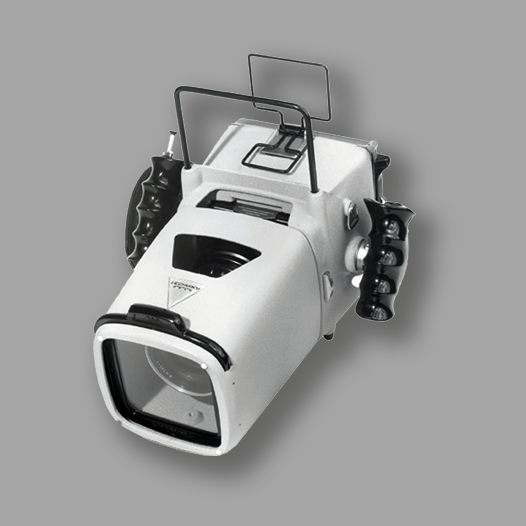
Linhof Aero-Technika c1957-1971. 9x12cm or 4×5” exposures on filmpacks, 6×9 or 6x6cm exposures on Rollex rollfilm, viewfinder, aircraft camera.
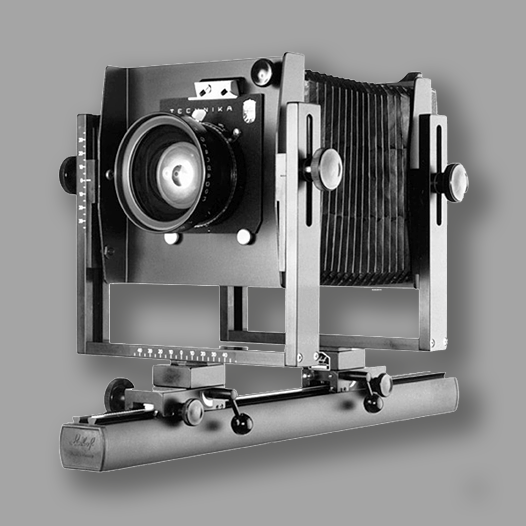
Linhof: Kardan Standard 1974-1982. 9×12, 13×18, or 18x24cm film, monorail, view camera.
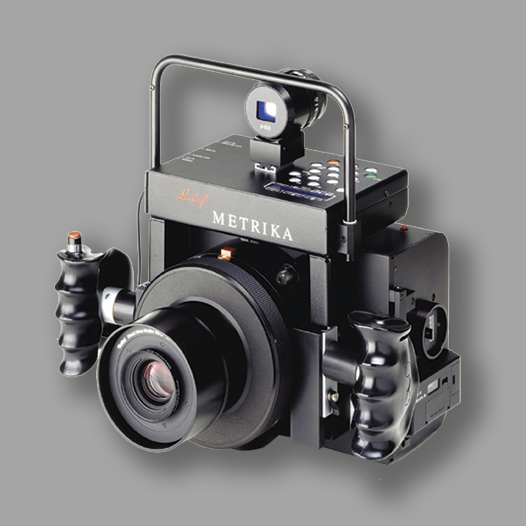
Linhof Metrika 45 1990. 4×5” exposures, viewfinder camera for photogrammetry. This camera was developed for precision measuring through photography.
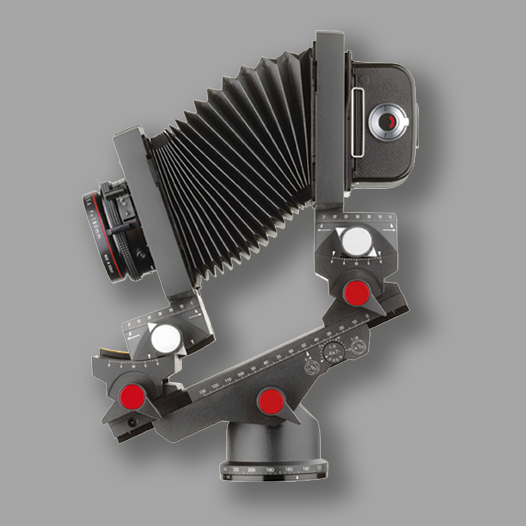
Linhof M679 Camera; Medium format studio camera introduced in 1996. The fully modular M 679 is a Tipa Award winner in 1997 for best professional product.Intended for both film and digital photography.
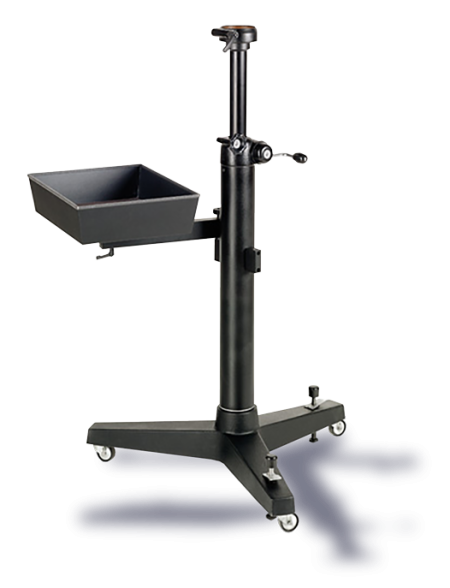
FOUNDERS: Fritz and Charlotte Richter, together with Karl Fischer.
COMPANY NAMES:
1947: Lippische Camerafabrik Richter & Fischer; 1948: Lippischen Camerafabrik Richter & Fischer GmbH; 1961: Lipca GmbH; The Lipca GmbH was officially dissolved on 29th March 1972.
COMPANY ADDRESSES:
1947: Im Wied 4, Barntrup/Lippe; 1961: Bad Nauheim;
Lipca was the successor of the East German Richter-Tharandt Company. In the 1950’s Lipca produces a wide range of TLRs such as Flexora, Optina, Optimet and Rollop of varying quality as well as cameras for some distributors under their own brand name.
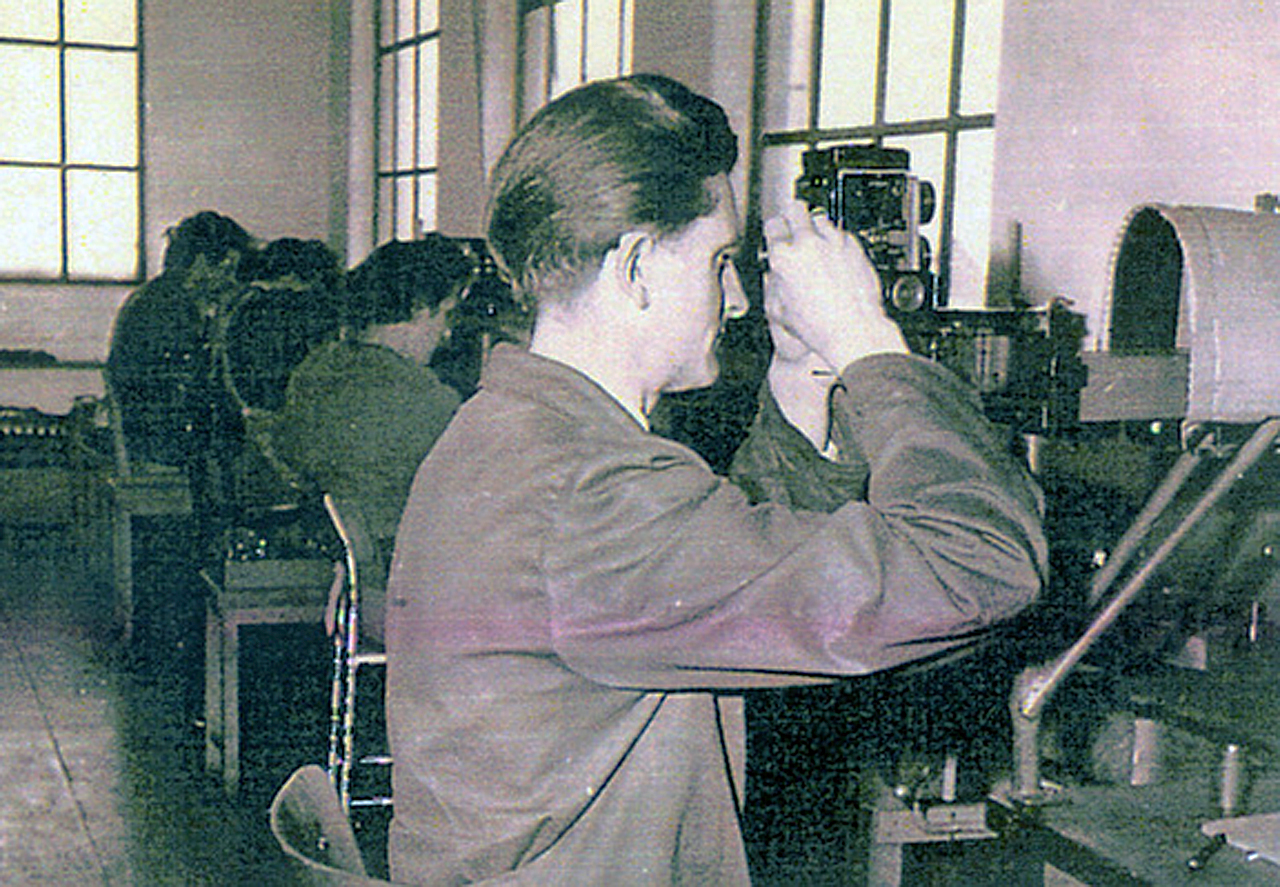
At the Lipca camera factory at Barntrup Germany.
Checking/Adjusting the Focus.
Lipca never was a big company; in 1957/1958 it had about 50 employees. At the peak of their camera production, they produced up to a 1000 per month. The workforce of Lipca was however like a close-knit family. It was not unusual that when they went on holiday they could lend a Lipca company TLR for taking their photos.
Production at the Lipca factory consisted for the main part of their successive TLR cameras, the Flexo, Flexora and Rollop. The Flexora and Flexo TLR cameras were developed from the prewar Reflecta. First prototypes were shown under the name of “Licaflex” in 1948. The company trademark was “Lipca”. They also produced a slide viewer, the Lipcascop.
Furthermore Lipca also worked for other companies; they license build an instant-camera photo boot, the Opiphot and there was a good relationship with the Plaubel company which resulted in production work for about 2000 Brooks-Plaubel Veriwide 100 cameras. There are also binoculars with the Lipca name observed.
In March 1961 the company moved to another location, Bad Nauheim, and registered there under the name “Lipca GmbH”.
At least the Rollop TLR was produced there for a short while. In mid 1962 the camera production ceased and the Lipca GmbH was officially dissolved on 29th March 1972.
Lipca, which is short for Lippische Camerafabrik Richter & Fischer, was started by a business agreement on October 30th 1947 in Barntrup, Germany, by the former owners of Kamera-Werk C. Richter, the married couple Fritz and Charlotte Richter together with Karl Fischer, a Master of Business Administration.
Namely, some months earlier, in June 1947, the Richter couple secretly left the Soviet zone in occupied Germany together with part of the employees and machinery of Kamera-Werk C. Richter Tharandt (situated near Dresden) as they feared an upcoming expropriation of that factory. They decided to settle in Barntrup/Lippe, the hometown of Karl Fischer, first in a rented part of a cigarette factory but soon in a new building at Im Wied 4.
Unfortunately Fritz Richter died in a tragic car accident in January 1948 while en route to a business meeting to discuss the plans for another camera factory in Bünde (later known as Balda Bünde). Charlotte, the widow of Fritz Richter and Karl Fischer then officially founded the “Lippischen Camerafabrik Richter & Fischer GmbH” Barntrup on May 14th 1948.
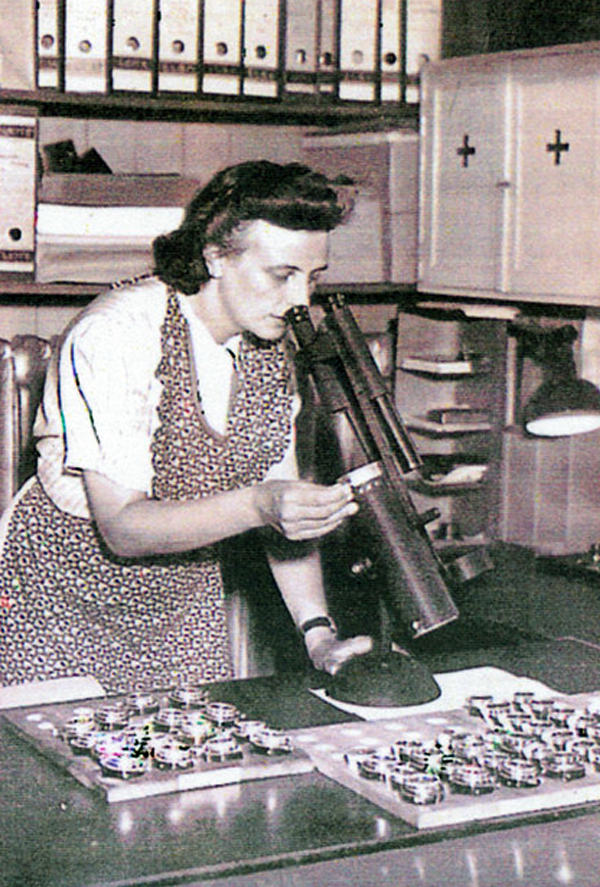
At the Lipca camera factory at Barntrup Germany.
With a Collimator the real focal length of each lens/shutter combination is measured.
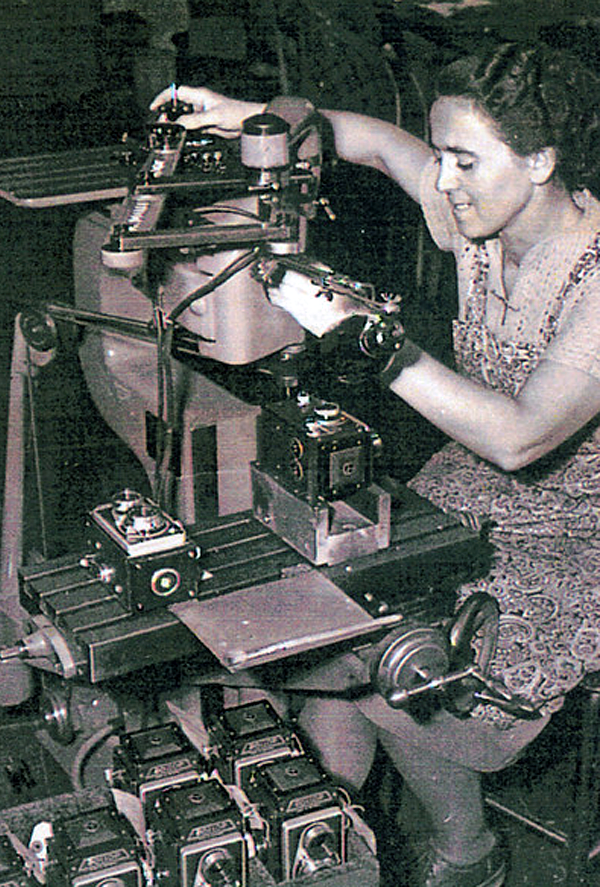
At the Lipca camera factory at Barntrup Germany.
Engraving a Rollop TLR (probably a Rollop-II)
*) The Rollop 35 was a last-ditch attempt of Lipca to enter the 35mm camera market after the sharp decline of medium format TLR’s sales at the beginning of the 1960s. Lipca didn’t produce the Rollop 35 by itself; they were relabelled cameras bought from King (Regula Rapid SL and Regula LBK) and Franka (Franka 125 and Franka 125 L).
Optimet is the name for the Rollop I used by Foto Quelle and Optina is the name for the Rollop I used by the Canadian mail order company Eaton.
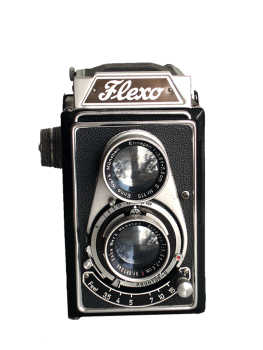
- Flexo (1948)
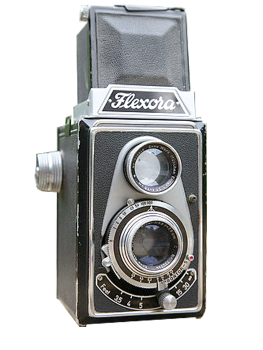
- Flexora (1951)
- Flexora II (1951)
- Flexora III (1956)
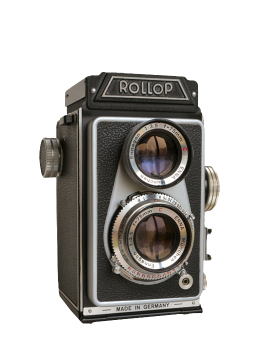
- Rollop I and II (1954)
(Optina) – (Optimet) - Rollop Automatic (1956)
- Rollop 35*
The Flexo is a German TLR made by Lipca. Production started in 1948 with the first version and ended in 1951 with the fourth version after which a trademark dispute with Franke & Heidecke forced the name change to Flexora.
It was the first model in a series of TLR’s that include the Flexora’s and Rollop’s. Of course many technical aspects of the Flexo agree with the Reflecta TLR that Kamera-Werk C. Richter build before and just after the second wold war.
The Flexora was the first of that line of TLRs made by Lipca. It is in fact a continuation of the Flexo which had to change name after a trademark dispute with Franke & Heidecke. Production started in 1951 and ended that same year when the Flexora II came out.
The Flexora II is a continuation of the first Flexora model and can be easily recognized from that by the extra conical ring around the taking lens. Production was from 1951 to 1954. From 1953 onward the following types were added: Type IIa a and Type IIIa.
Rollop is the name of a series of TLR models made by the German company Lipca introduced in 1954. Were the former Lipca TLR’s, the Flexo and Flexora, still made of sheet metal now there is a change to a body made of injection molded aluminium.
The name Rollop is not accidentally close to Plaubel’s Roll-Op. There were close connections between Lipca and Plaubel. Plaubel even gave the rights on the Roll-Op trade name to Lipca.
FOUNDER: Unknown
COMPANY NAME:
1982: Loreo Asia Ltd.
COMPANY ADDRESS:
1981: Rm. 7, 7/fl., New City Centre, 2, Lei Yue Mun Road, Kwun Tong, Kowloon, Hong Kong.
Manufacturer of innovative 3-D Cameras, 3-D Lenses and Optical Systems for consumers and professionals. Their products are designed to be practical and reliable, and are perfected through exhaustive testing.
Much of this text about Loreo is taken from press releases from this company. As a result, the text can and will often come across as too bombastic and too exaggerated. For which apologies.
There’s nothing new under the sun…
It was extremely difficult to find information about the origins and early years of Loreo. We are therefore forced to limit ourselves mainly to a description of their production program.
Loreo is a manufacturer of stereo photography equipment, including 3-D cameras and stereo lens attachments for SLR cameras, pinhole devices and the famous “Lens in a Cap”, a simple, focus free lens with apertures, in a kind of camera mount cap for a variety of SLR cameras which had quite some success in the years of the Lomo hype.
 Some cameras produce cross eye stereo images, where the right-part of the photo is actually the left image and vice versa. Other cameras produce parallel stereo images, where left and right are not swapped.
Some cameras produce cross eye stereo images, where the right-part of the photo is actually the left image and vice versa. Other cameras produce parallel stereo images, where left and right are not swapped.
Loreo was founded in 1982, and is based in Hong Kong, China and is still in business.
Stereo pictures taken using Loreo systems are instantly viewable using 3-D viewers without any cutting or remounting. These stereo photos are in the same format and size as any normal photograph; only they contain 2 images side by side.
 The system used is side-by-side or parallel 3-D viewing, you look at the printed pictures with the help of a viewer, like those old stereo pictures from the 1900s.
The system used is side-by-side or parallel 3-D viewing, you look at the printed pictures with the help of a viewer, like those old stereo pictures from the 1900s.
The ingenious idea was to use the standard 24x36mm film format, which can be processed in any photo lab. The two stereo pictures are on one 24×36 frame. So on a 10×15 cm print you have both, side by side.
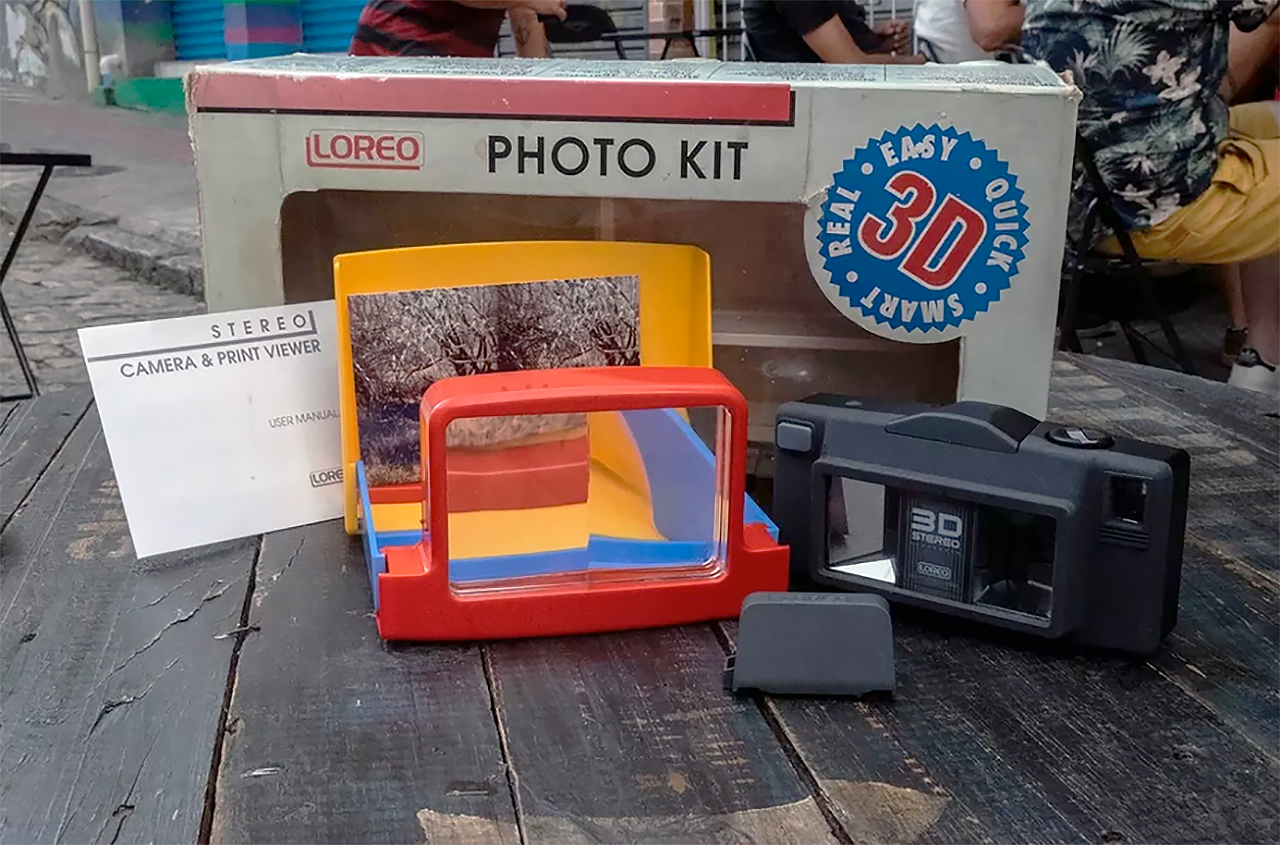
The Award-winning MK-1 Stereo kit of Loreo

An ordinary Hong Kong street scene – almost like a movie set from the 80’s
AWARD
In 1990, Loreo Asia Ltd. released the award winning 3-D Photokit, the MK I. This simple but ingenious camera has a unique place in the history of stereo photography. Reliable and easy to use, the Photokit became very popular with 3-D enthusiasts, and is still used by many fans all over the world.
Later there was a “321” model, which uses the crossover stereo format (odd eyed), different from the side-by-side format, which needs different viewers. It had motorized film transport, but still a single speed shutter, 1/90s as on the MK I. However, it featured a switch to use a third lens for a 24×36 non stereoscopic picture. All cameras were also branded, the most known being the Argus brand.
In 1991 Loreo launched a major upgrade of the popular LOREO 3-D Photokit. The new LOREO Photokit MK II now has Glass Mirror Reflectors and Aspheric Lenses, which produce sharp 3-D pictures. Image Pitch has been adjusted for even easier 3-D fusion, particularly with 4R prints.
New Mini viewers work well with images from the MKII Aspheric Lens. F-stop has been opened up to 2.5 mm diameter and the shutter adjusted from 1/90 to 1/60 sec for brighter photos under dull conditions. A new beam splitter housing eliminates internal reflection.
Fans liked the first Photokit because it was a compact stereo camera where most of the optics were housed in the camera body. It was lightweight and easy to carry around. Having a 28mm lens helped compensate for having a single frame split into two images. The hugely improved MK II still has all these features, and is turning out to be even more popular.
Photokit MK II pictures can be digitized. Scans can be made from prints, or directly from negatives. They can be viewed on computer screens with a Loreo Lite 3-D Viewer. A high resolution LCD or CRT monitor is recommended. For best 3-D effect, images should be resized so that they are not more than 8 inches across onscreen.
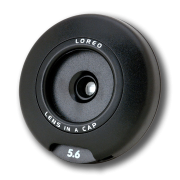
3-element fixed focus lens. Turns SLR camera into Point-and Shoot camera.
- Focal length 35 mm;
- f/5.6 – f/64.
- Pre-Focussed from 50 cm to infinity at f/64.
- Adaptable for use with the Lubot.
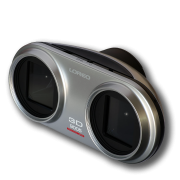
Parallel 3-D format by transposing 2 images. Designed for APS-C subframe Digital SLRs.
- Focal length 40 mm;
- f/11 f/22 lenses;
- Lightweight silver-grey body;
- Patent pending.
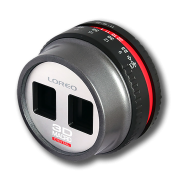
3-D effect by transposing 2 images. Designed for subframe Digital SLR cameras.
- Focal length 38 mm (effective 60mm);
- f/11 f/22 lenses;
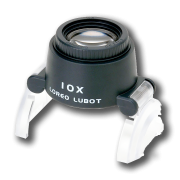
Pocket-sized, distortion-free 10x loupe. Adaptable for Ultra-Macro photography.
- Aspheric lens;
- Sharp, undistorted magnification;
- Adjustable focus;
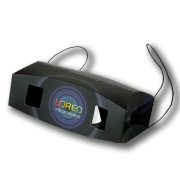
Parallel format 3-D image Computer Monitor Viewer for medium sized images made of card paper.
- Folds flat to 138x96x5 mm;
- Weighs 22g;
- For viewing 10 – 13 inch wide print and computer screen images;
- View at least 17 inches from 3-D photograph to front panel of viewer.
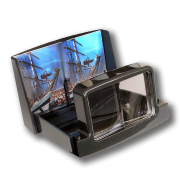
Sturdy grey plastic Deluxe 3-D Viewer for Stereo Print Viewing up to 4″ x 6″ or 3.5″ x 5″ prints.
- Free of keystone distortion;
- The viewer folds down for easy transport;
- No eye-strain;
- No special remounting needed.


